WINGED

500 SARATOGA AVENUE, SAN JOSE, CALIFORNIA 95129
UPCOMING DATES
TK-12 SPIRIT DAY
TUESDAY, AUG. 27


500 SARATOGA AVENUE, SAN JOSE, CALIFORNIA 95129
TK-12 SPIRIT DAY
TUESDAY, AUG. 27
mihir kotbagi
Thirty-five incoming frosh attended Harker Robotics’ annual summer camp at the upper school from Aug. 5 to 9, where 13 rising sophomores and upperclassmen taught them about various aspects of the team. The week started with a broad overview of the team’s operations, purpose and history before progressing to more specific training. Frosh chose which subteams they wanted to learn about, with many opting to focus on technical ones like design and machining. Each subteam’s work culminated in presentations on Aug. 9 where frosh discussed what they learned about and worked on.
Harker Dance members attend USA Dance Camp jessica wang
Harker Dance Company and Kinetic Krew members attended U.S.A. dance camp from Aug. 7 to 9 to prepare for their performances during the 2024-2025 school year. Both groups learned one shared dance and two routines specific to their individual groups. The joint camp dance was a jazz number; one Harker Dance Company’s was contemporary and the other jazz, while Kinetic Krew’s two dances were both in the style of hip-hop. Dancers also conditioned and worked on technical skills during the camp.
Orchestra welcomes students to music mini-camp jessica wang
Students attended Orchestra minicamp on Aug. 17 at the Rothschild Performing Arts Center to improve their musical skills. Orchestra members began to practice Mozart’s “Magic Flute Overture”, Stravinsky’s “Petrushka”, and Rimsky-Korsakov’s “Scheherazade Op. 35.” They also tackled William Grant Still’s “Afro-American Symphony Movement 3” and collaborated with the choir on Holst’s Personent Hodie. The camp featured sectional rehearsals focused on audition excerpts, providing tailored practice for each instrument group. The group also engaged in teambonding activities such as Kahoot.

lily shi
Students and staff began the school year on Matriculation Day and listened to speeches welcoming the Class of 2028 to campus and highlighting Harker’s values in the Zhang Gymnasium on Friday.
Frosh entered the gym to the applause of seniors, juniors and sophomores. Head of Upper School Paul Barsky introduced Harker’s four core values and expanded on the first value of kindness. This year, each grade will focus on a specific value: frosh on personal accountability, sophomores on respect, juniors on integrity and seniors on kindness. Barsky emphasized the importance of kindness in his speech, highlighting how small individual acts can lead to more acts of kindness in the community.
“I think it’s really important and valuable that we’re acknowledging these values,” Honor Council member Linda Zeng (11) said. “Sometimes people forget about them, and if we just have one we
can really focus on in a year, it can help unite each grade and also help us connect more with them.”
It’s important to really recommit every year to the values that we hold dear.”

JENNIFER GARGANO
ASSISTANT HEAD OF SCHOOL
ASB President Sam Parupudi (12) welcomed the Class of 2028, offering advice for the year. The Harker String Quartet, conducted by Jaco Wong, performed “Stay with Me” and “Viva la Vida.” ASB Vice President Alicia Ran (12), Ariana Gauba (12) and Honor Council members highlighted personal accountability, respect and integrity. Sam
introduced student leaders, and Alicia led the annual recitation of the Matriculation Oath. Due to technical difficulties, class council videos were posted on Schoology instead of being screened live.
After the ceremony, the frosh remained in the gym to sign the Harker Matriculation book, officially marking them as members of the upper school as well as affirming their full commitment to the oath. Students spent the remainder of the day meeting with their advisory, filling out handbook acknowledgments and other forms, taking student photos and attending individual class orientations.
“It’s important to really recommit every year to the values that we hold dear, because the values are the foundation upon which everything is built,” Assistant Head of School Jennifer Gargano said. “Once we have that foundation, we feel safe and we feel nurtured. And when you feel safe and feel nurtured, then you can learn.” Visit harkeraquila.com for full story.



jessica hu & lily shi
This year’s presidential election has been one of the most closely watched by the American people. From President Joe Biden and former President Donald Trump arguing about golf during a presidential debate to Vice President Kamala Harris facing accusations of using artificial intelligence to fake crowd size during campaigns, the election has been marked with a series of unprecedented and controversial events. Listen to the thoughts of four Harker students and one teacher regarding the election below.
“I think that youth representation is incredibly important because we make up huge percent of the population, yet only 12% of us actually register to vote.”

JULIANA LI (12) STUDENT
“The one thing I really value in a president is this ability to listen to other people and to see the other side without going into it thinking, ‘Oh, they’re just the enemy’.”

“
ERIC DONG (11) STUDENT “
I’m going to be looking at abortion and reproductive rights, global conflicts, human rights, climate change. Those are the issues that are being very polarized on both sides.”

AMEERA RAMZAN (10) STUDENT
It’s part of the youth’s way of dealing with such an unstable political landscape right now to just make jokes, make it into a meme.”

LAUREN XI (10) STUDENT

Eleventh graders kayaked and hiked at Angel Island while tenth graders tackled ropes courses in the Santa Cruz mountains for their annual class trips on Aug. 15.
The juniors began the day at 6:45 a.m, taking a two-hour bus and ferry ride to Angel Island. Once there, they split into two groups: one kayaking in Ayala Cove or hiking to Mount Livermore with rangers, and the other participating in a photo scavenger hunt across the island.
Junior Daniel Miao chose to hike as he hoped to view the landmarks across the San Francisco Bay.
“There were really good views on the hike,” Daniel said. “From the top we could see the Salesforce building, the Golden Gate Bridge and the Academy of Fine Arts. The tour guides were really nice and they pointed out all the buildings.”
The scavenger hunt participants completed various challenges and uploaded pictures for points over a one-
hour period. Prompts included taking photos at specific destinations around the island and answering questions about Harker’s history. After a lunch break, the two groups swapped activities.
“Without that bonding experience, we would need several weeks to get as close as those few hours gave us.”

KELLY LEAHYMCKEOWN JUNIOR ADVISOR
Junior advisor Kelly LeahyMcKeown appreciated the novelty of the photo scavenger hunt.
“We had to put ideas out there, accept each other’s ideas and do crazy things, which brings a group closer,” she said. “Without that bonding experience, we would need several weeks to get as close as those few hours gave us.”
Junior class council announced the winners of the scavenger hunt during junior orientation Friday. The advisories of vocal music teacher Jennifer Sandusky, business and entrepreneurship teacher Samuel Lepler and economics teacher Dean Lizardo took first, second and third place respectively, winning prizes like lunch line passes and donuts.
Meanwhile, sophomores met at 7:30 a.m. before splitting into groups and taking buses to three ropes course locations. Students then participated in a variety of team-building activities with t that fostered collaboration.
In one activity, students swung from ropes to try to land on the same platform. In another, they worked together to guide a ball into a bucket using pipes.
Students were also equipped with harnesses and helmets to tackle high ropes course challenges. These included climbing a ladder with wooden planks spaced several feet apart and walking on ropes suspended in the air while holding on to each other for balance while their advisories cheered them on from below.
katerina matta
The annual “Field Day” kicked off the frosh class’s high school experience at the upper school campus on Aug. 15. The day centered around welcoming students to campus and helping them get to know each other.
The frosh met their advisories for the first time in the Auxiliary Gym, walking through a “hand tunnel” formed by members of Link Crew. Link Crew connects upperclassmen with frosh advisories, where the elder students serve as mentors throughout the year.
“
“
I’m looking for someone who can be a role model for civil discourse, particularly for my own kids and for the kids that I teach.”

MARK JANDA HISTORY DEPARTMENT CHAIR

By the end of it, they were pretty bonded and more comfortable being new to the high school.”
SONIA YU (12)
LINK CREW MEMBER
Class Dean Jeannette Fernandez welcomed students to campus before dividing advisories into groups. Each advisory participated in icebreaker

a stuffed frog on plastic pipes in an advisory game. Teambuilding company Apex Adventures hosted the games.
activities and practiced the emergency line-up protocol on Davis Field.
Teambuilding company Apex Adventures then hosted a series of games to encourage communication between the frosh.
Throughout the day, upperclassmen facilitated the activities and helped advisories become more comfortable
with each other. Member Sonia Yu (12) was excited to take on more responsibility as a senior in Link Crew.
“It’s definitely a different experience being a senior on Link Crew,” Sonia said. “By the end of it, they were pretty bonded and more comfortable being new to the high school.”
Visit harkeraquila.com for full story.

The Class of 2025 attended the annual Senior Retreat at the upper school campus on Aug. 14. A variety of panels, faculty-led workshops and bonding activities marked the start of the school year.
Students first attended an alumni panel moderated by Director of Alumni Relations Karan Lodha in Patil Theater. Class of 2022 graduates Riya Arora, Dawson Chen, Angela Gao, Nikki Kapadia and Kavita Murthy touched on various topics, from transitioning between high school to university to navigating the college application process.
Afterward, students attended their first of two workshop sessions. The nine options ranged from life advice like history teacher Chuck Witschorik’s “Making and Managing Friendships” to active options like math teacher Caren Furtado’s “Bollywood Dance Party.” Adam Pawliger (12), who attended the “Breathing with Barsky” session, said he
enjoyed learning about the meditation techniques Head of Upper School Paul Barsky shared.
“There’s value in you as a person, as an individual, but that value comes out most clearly in the context of community.”

CHRISTOPHER
HURSHMAN
SENIOR CLASS DEAN
“We did box breathing and 4-7-8 breathing, and at the end, we did a body scan where almost everyone fell asleep,” Adam said. “I learned how relaxing breathing can be if you focus on it.”
In between workshop sessions, Senior Class Dean Christopher Hurshman’s “Envisioning a New Tomorrow Today” addressed the
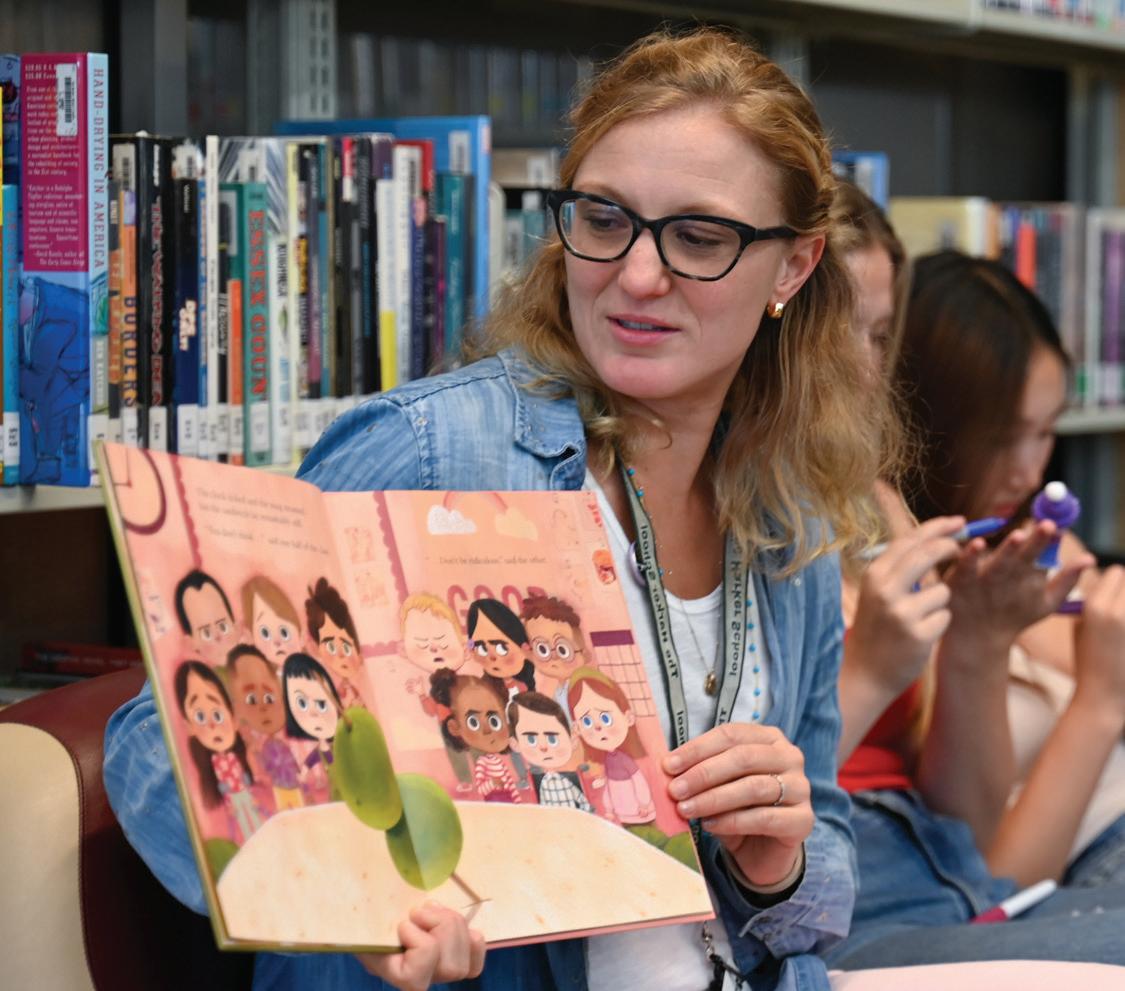

increasing responsibilities of senior year and approaching these new frontiers while maintaining a sense of self.
“There’s value in you as a person, as an individual, but that value comes out most clearly in the context of community when you are relating to others and you are acting on your responsibilities towards them,” Hurshman said.
After a second workshop session and dinner, students decompressed with laser tag, video and board games and a screening of “Shrek.” The showing inaugurated the “25 Films Through 2025” series, an initiative spearheaded by Film Club that celebrates the senior class by featuring one film from each year between 2001 and 2025. Audrey Feng (12) said that the Senior Retreat helped reconnect the class.
“I had a lot of fun being able to catch up with everyone,” Audrey said. “It was nice to get to know my classmates and teachers better during the workshops before we start senior year.”
Visit harkeraquila.com for full story.
“Senior Sunrise” marks start of year: Annual tradition continues with Class of 2025
The Class of 2025 kicked off their final year on campus with the annual “Senior Sunrise” on Monday morning. Following the annual tradition, seniors gathered to watch the sunrise together on Davis Field at 6 a.m.
Class Council organized the event, providing donuts and hot chocolate for students to snack on as well as extra blankets. Class Council Officer Jason Shim (12) applauded the efforts of student leadership in coordinating the event.
“ It’s a testament to our bonding as a senior class council group, that we got this done pretty seamlessly.”

SHIM (12) SENIOR STUDENT COUNCIL
“This went really smoothly,” Jason said. “Everyone’s having a ton of fun. It’s a testament to our bonding as a senior class council group, that we got this done pretty seamlessly.”
As the event came to a close, students took a class photo on the 25-yard line.
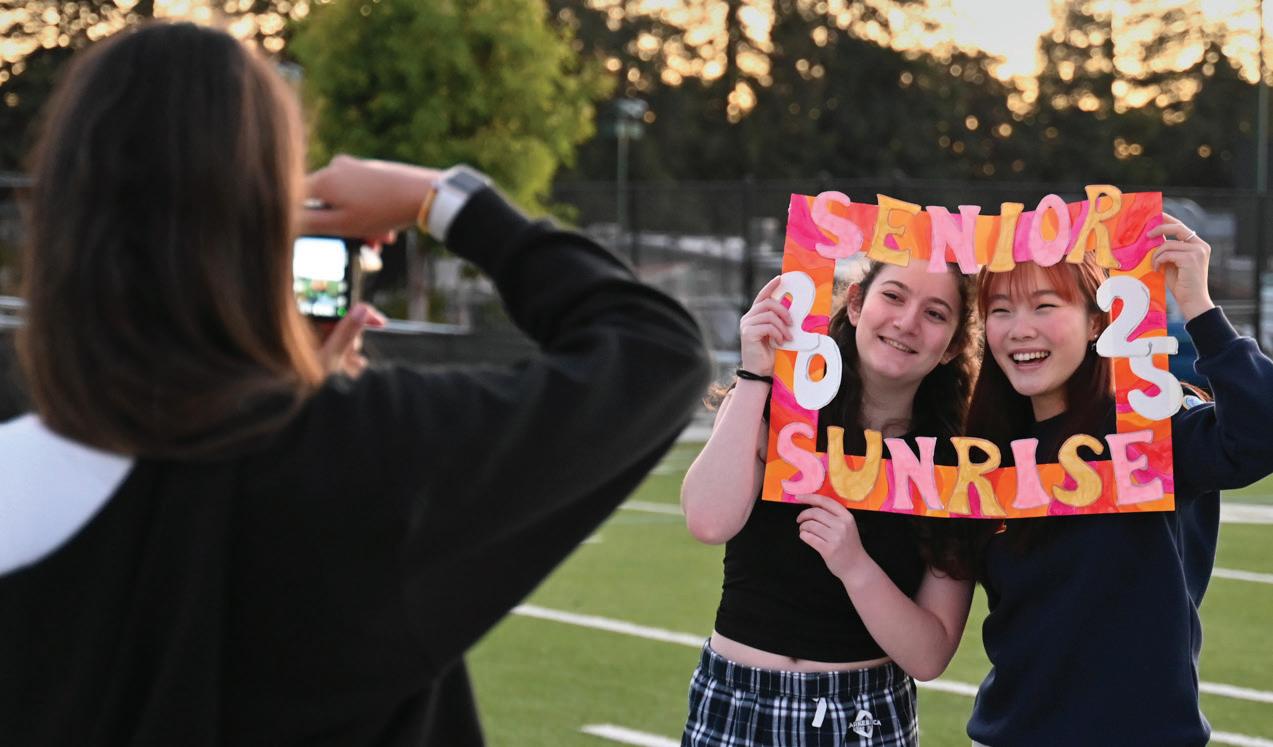
seniors then either departed for breakfast outside of campus or lingered on campus with their friends. Tiana Salvi (12) said she appreciated the opportunity to spend time with her classmates right before the bustle of the upcoming academic year.
“I really liked just seeing everyone again,” Tiana said. “I saw some people during Senior Retreat, but mostly everyone is here right now, and seeing people being cozy with each other and taking pictures was really cute. I liked the vibes.”

Prime Minister of Bangladesh Sheikh Hasina resigned and fled to India after student demonstrators protesting police brutality and her authoritarian government converged on her official residence on Aug. 5. The protests began in early June over controversial quotas in civil service jobs that gave preference to descendants of Bangladeshi freedom fighters in the country’s war of independence from Pakistan. Supporters of the Hasina government shot and killed over 1,000 protestors and civilians. Previously, the Hasina government had used the court system to persecute political opponents, and many opposition leaders were arrested or killed in prison.
World Health Organization Director-General Tedros Adhanom Ghebreyesus deemed the mpox virus an international public health emergency in a statement on Aug. 14. Mpox has killed nearly 1,500 people and infected nearly 40,000 more in 13 nations, as of Aug. 4. The virus spreads mainly through contact with infected people and animals and consuming contaminated meat. Because of mpox’s ability to rapidly spread through vulnerable populations, Africa CDC Director-General Jean Kaseya called for African nations and their global partners to work together to contain mpox’s spread.
An alliance of ethnic and opposition insurgent groups captured the Myanmar military junta’s Northeast Command in the town of Lashio on Aug. 5. The success came after a 23-day operation that aimed to expel the military from its base, from which it commanded 40 battalions in the country’s northeast and Chinese border. The junta lost much of its capabilities to continue operations in the area. The civil war began after Myanmar’s military, the Tatmadaw, launched a coup d’état against the democratically elected government in Feb. 2021.
As Class Dean, Upper school English teacher Christopher Hurshman has sought to instill strong spirit in the class of 2025.
“I’m always glad when the class can enjoy each other’s company, and when they seem to just be relaxing and sharing some friendship and community,” Hurshman said. “There aren’t tons of opportunities for that when the school year gets going, so it’s nice to have it before we kick off.
Visit harkeraquila.com for full story.
Over 700,000 Puerto Ricans lost power and were forced to evacuate from Hurricane Ernesto on Aug. 14 as the storm pushed the island’s fragile power grid past its limits on Aug. 14. Many have no electricity despite power infrastructure largely remaining intact. Forecasts predict that Ernesto will continue moving through the north Caribbean as it becomes stronger, eventually moving parallel to the U.S. East Coast.
Visit harkeraquila.com for full story.
janam chahal
Harker will be welcoming nine new faculty and staff members to the upper school this year. Many of the new faculty and staff expressed their excitement to step into their new positions for the 2024-25 school year.
New history teacher Sohrab Ghassemi, who will be covering for upper school history teacher Dr. Chris Gatto, who will be on paternity leave during the first semester, shared his curiosity about how students may apply what they learn in history class.
“I will be curious as we study World and U.S. History if students will end up making connections to their own lives today and maybe have questions about that,” Ghassemi said. “I think it would be a very important part of my job to be able to help them answer those questions that they have.”
Many teachers participated in a new teacher orientation prior to the beginning of the school year. They had the opportunity to prepare for the upcoming academic year and get to know other new faculty members.
Additional reporting by Isabella Lo, Mendy Mao, Vivek Moorjani and Claire Yu.

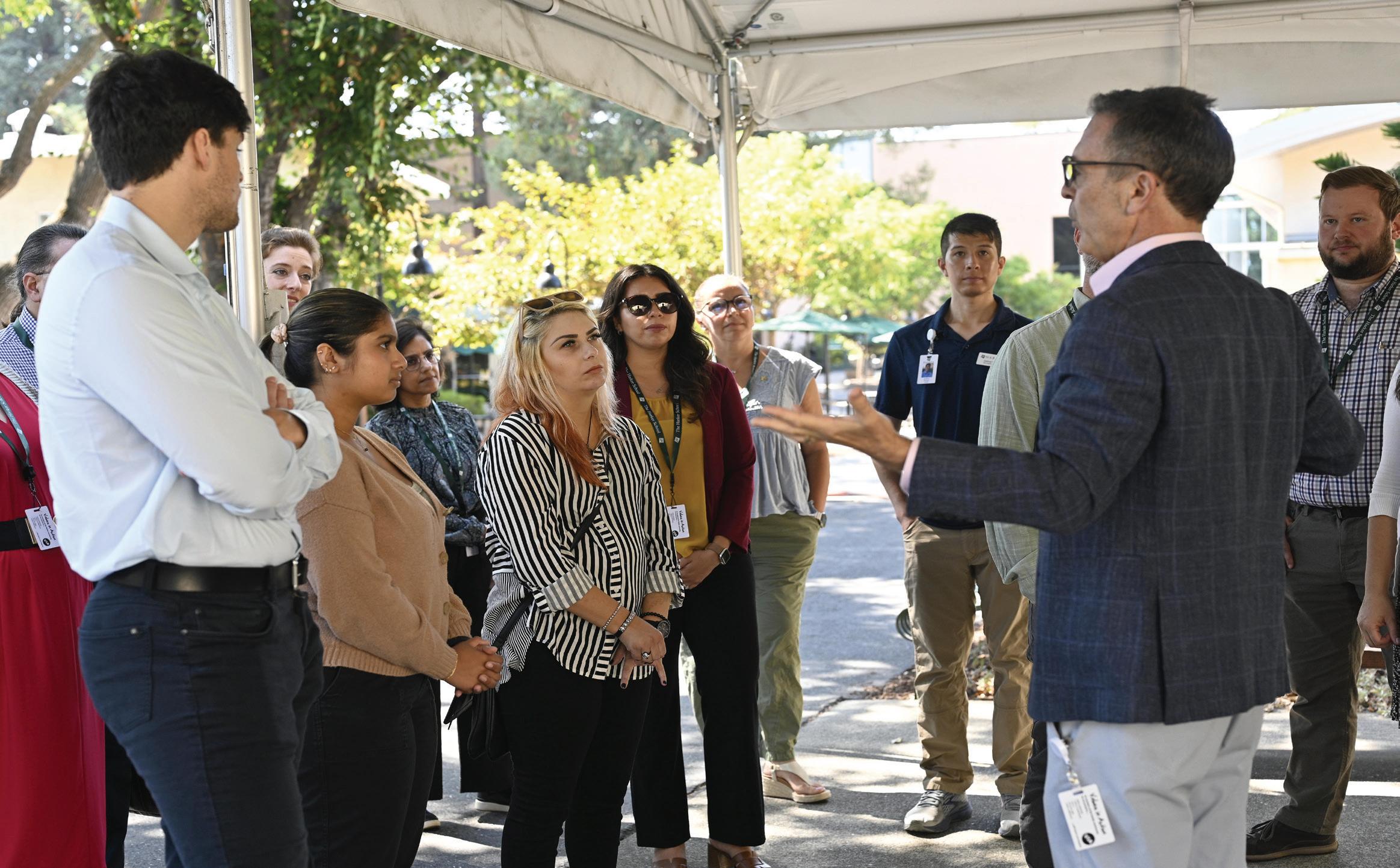
DIPTI SHINGNAPURKAR CHEMISTRY
“I am looking forward to creating awareness about chemistry and the different careers in STEM.”
FUN FACT: Has two left feet


DAVID KILPATRICK
SPEECH & DEBATE

ZANE MOORE BIOLOGY

“I really like anything outdoors. I’m interested in finding biology in a bunch of neat, weird places.”
FAVORITE ANIMAL: Desert pupfish

“Teaching in a classroom will be really fun, and I’m excited to go to tournaments with the team.”
FAVORITE MOVIE: Solaris


ERICA CUNG STATISTICS & ALGEBRA 2
“I’m from here, and my sister works here, and she said, ‘Come here and teach and have a good time.’”
FAVORITE VIDEO GAME: Stardew Valley

POULSEN-HOLLIN DIRECTOR OF LIBRARY

SOHRAB GHASSEMI WORLD & U.S. HISTORY
“I am a big proponent of discussion and getting students comfortable with public speaking.”
FUN FACT: Likes maps

SERVICES
“I am looking forward to getting to know the kids so I can support them no matter what their needs are.”
FUN FACT: Drives an orange car
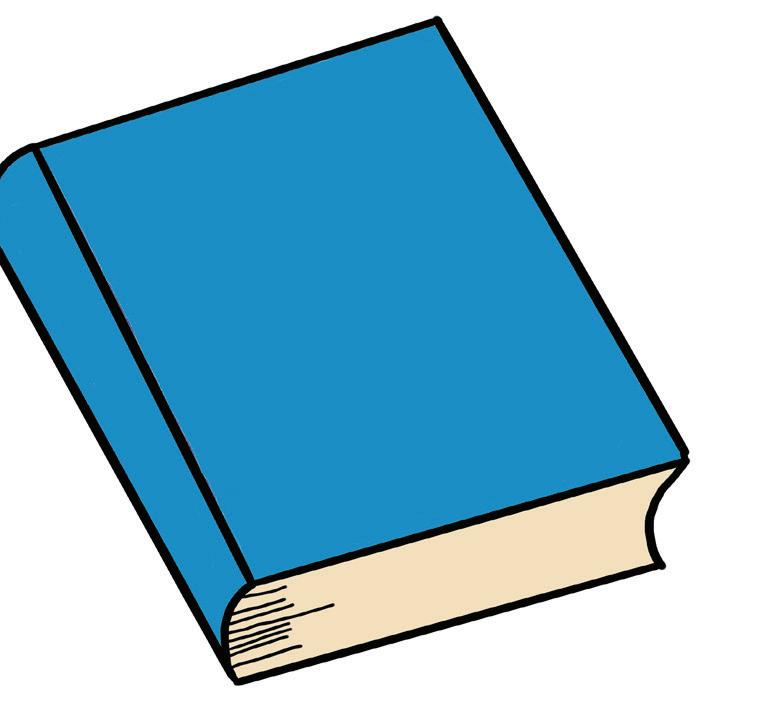
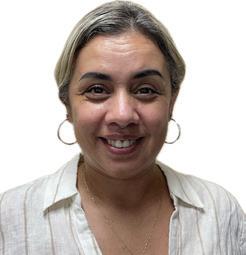
PAULINA REYNOSO ASSISTANT TO THE COUNSELORS
“My background is more tech and business. [This] was something different, and I wanted to try it out.”
FAVORITE DESSERT: Sesame balls

Peel back the bright yellow lid. Lean into the steaming cup of instant ramen. As you savor the scent of lemongrass broth wafting toward you, your mind might jump to popular commercial ramen brands. Think again. The cup before you belongs to none other than Shlurp Ramen, Harker’s latest studentrun business to hit the market.
“As soon as I held my first cup of Shlurp in my hand, and I was able to eat it, it was such a surreal experience.”

NAIYA DASWANI (12)
SHLURP RAMEN CO-FOUNDER
Founders Naiya Daswani (12), Siddhi Jain (‘24) and Emily Mitnick (12) launched Shlurp as their Incubator project. As all three founders face dietary
restrictions, from being gluten-free or vegan to requiring a high-protein diet for athletics, they sought to transform instant ramen into a healthier and more accessible option.
“We brought together our own difficulties with finding foods that worked for us, and we joined forces and came up with a solution that would be accessible to so many more people than we originally envisioned it to be,” Emily said. “Through this class, we started building out the foundations of our business and exploring how far we could go, and it’s just taken off since then.”
Although the brightly-colored cup may seem picture-perfect, Shlurp endured many unique challenges on its way to fruition. To fulfill their initial goal of creating a healthy alternative to instant ramen, Naiya, Siddhi and Emily purchased various raw ingredients themselves, experimenting with different combinations until they found an optimal recipe. Then, they searched for vendors and manufacturers, researching different sites across the country and calling over 70 producers. Emily said their young age
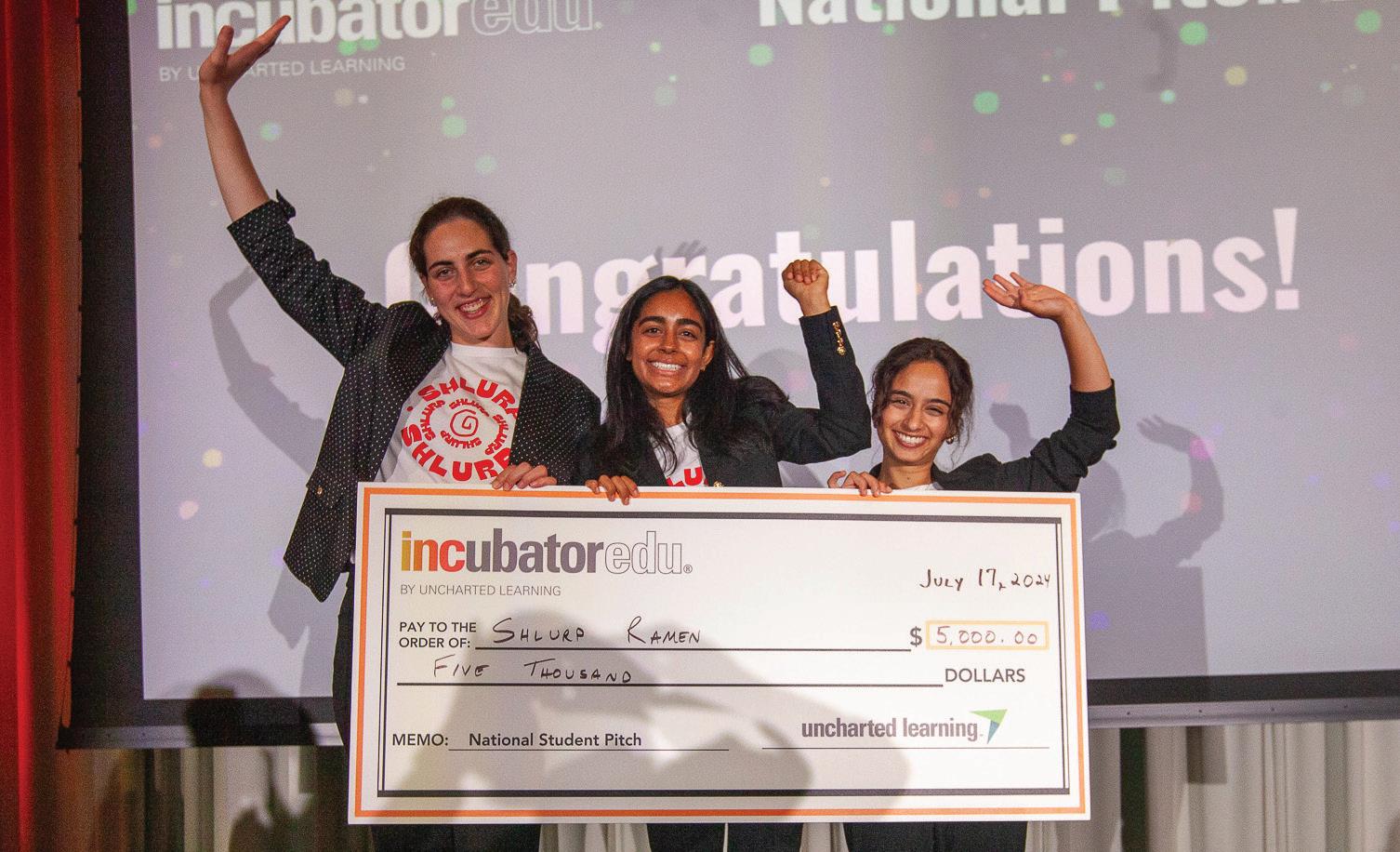
and relative inexperience spurred doubt in the factories they contacted.
After many setbacks and product trials, the first cups of Shlurp finally arrived. Naiya remarked on the gratification of seeing their hard work pay off when she
saw their product.
“It was super, super cool to see how we’d just been like on the drawing board for so long and it had all been an idea,” Naiya said. “But as soon as I held my first cup of Shlurp in my hand, and I was able to eat it, it was such a surreal experience.” Visit harkeraquila.com for full story.
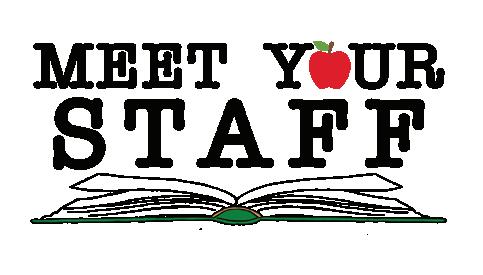
Patricia Burrows looks forward with past experiences in mind

Apair of geckos lazily lounge in their cage. Two cups of freshly steeped peppermint tea effuse a refreshing aroma. Past visitors smile from a wall of polaroids over several plush armchairs. Incoming Director of Diversity, Equity and Inclusion (DEI) Patricia Burrows has carefully curated every detail of her office to make visitors feel relaxed, welcome and at home.
Harker first formed a DEI committee in 2013 with the goal of creating a more diverse student body, but the position of DEI Director is only two years old. Therefore, with little historical precedent for her role, Burrows approaches her position by drawing on her personal childhood experiences.
“Growing up in the ‘70s in Toronto, there wasn’t a lot of representation that mirrored me in school,” Burrows said.
“But my weekend life, which involved Taiwanese church, was very much a representation of my cultural identity. I didn’t feel like I fit in either [place]. So naturally, I’ve always noticed when people didn’t belong because I had those feelings myself.”
“
Naturally, I’ve always noticed when people didn’t belong because I had those feelings myself.”

PATRICIA BURROWS DIRECTOR OF DEI
Burrows curates her office to be as inviting as possible. Once a place for disciplinary conversations, her office
houses two pet geckos and a tea station.
“I’m not the Assistant Middle School Division Head — I’m not responsible for discipline,” Burrows said. I’m here about inclusion and belonging. So I have to invite people in, find ways for people to come and see the room.”
Burrows previously worked as an English teacher and later as Assistant Middle School Division Head, where she interacted with a more diverse demographic than that within her classroom. Now that Burrows’s position is to oversee DEI across all three campuses, she reflects on the lessons she has learned about the Harker community.
“My goal is to get young people to understand that you don’t have to be like other people in order to fit in,” Burrows said. “It would be amazing to create a community where our goal is to fit in just because that’s the right thing to do.”
Visit harkeraquila.com for full story.
Summer break: a time traditionally associated with relaxation, vacations and a break from a rigorous academic schedule. Yet, for many high school students, summer break also brings an opportunity to gain work experience, earn extra money and develop new skills. Over summer, many Harker students traded lazy days on their phones or at the beach for shifts at various jobs, contributing to their personal growth and future aspirations.
Having my first job and being able to mentor other students was a really good learning experience.”

ANANYA PRADHAN (11)
Ananya Pradhan (11) worked as a junior judge in the inaugural debate camp at the upper school over summer. Ananya enjoyed the opportunity to continue to engage in extracurriculars during the
summer that she normally enjoys only during the school year.
“It was a great way to help the team and also continue doing debate over the summer from a different angle,”
Ananya said. “Having my first job and being able to mentor other students and work professionally with people who I see during the school year was a really good learning experience and definitely something that I’ll take forward with me in the future.”
Harker itself provides various opportunities for students to work at summer sessions. Similarly to Ananya, Emily Bryan (11) worked a summer job as a junior lifeguard for summer camps at the lower school in 2023, where she primarily taught swim lessons for elementary school students.
“Everyone was really nice, and it wasn’t a super hard job,” Emily said. “I just had to teach little kids how to play ‘red light green light’ and swim. I thought it was really fun to work with the pre-K kids and teach them because they were just really cute.”
Summer break is an excellent opportunity for both personal and professional development. From gaining real-world experience to achieving
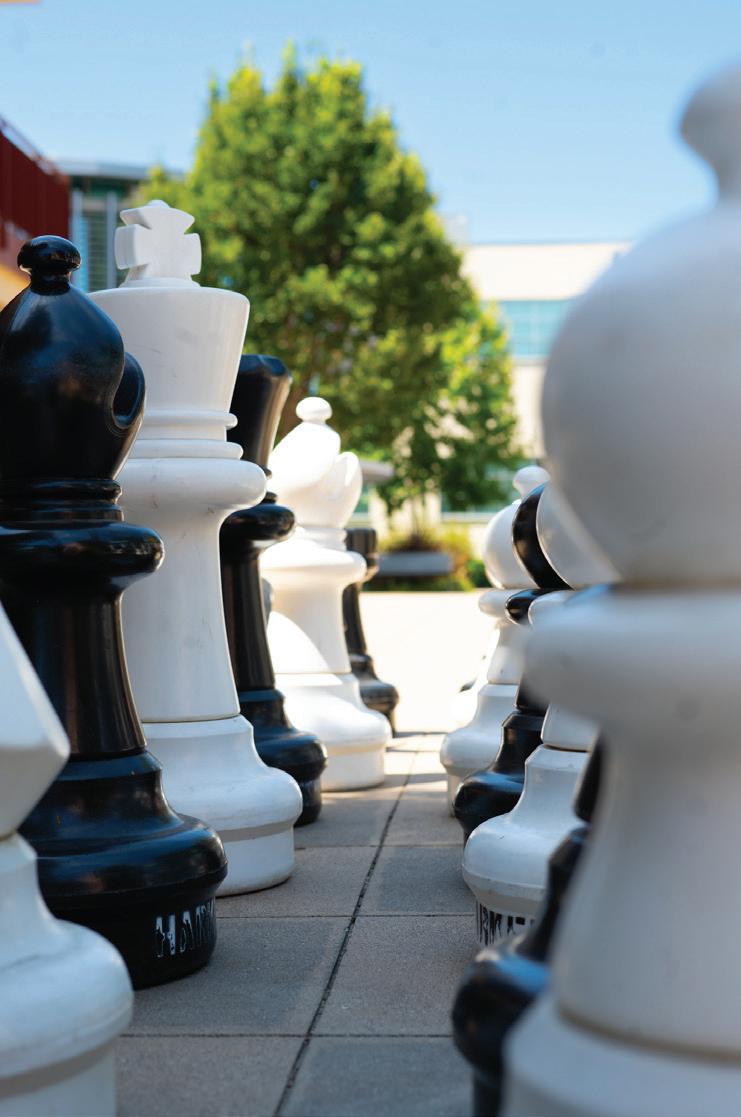
The two players stare at the ground, their minds simultaneously weighing the present and future state of it, hoping to gain an advantage with their moves. As white spots a flaw in his opponent’s defense, he walks up to the board and lifts up one of the pieces, hauling it over to its new square.
Tucked between Nichols and Dobbins, the giant chessboard is a hotspot for chess enthusiasts, posing as a bonding space or a battleground for friendly competition between students. The fact that players can stand amidst oversized pieces while making tactical decisions takes the game to a new form of mental and physical engagement. The eccentric space comes with an equally extensive history.
The chessboard dates back to 2011, when upper school math teacher and Chess Club advisor Anthony Silk received a $500 check from the Institute of International Education after one of his students won a scholarship. He decided to use the money to fund the giant chess board.
“I’ve

financial independence, summer jobs prepare students for future challenges they may face. Each of these students, from lifeguarding to debate judging, has benefited from their summer jobs. They have gained experiences and skills like managing their time and working with colleagues that will serve them far beyond high school.
always thought we should have a large chess set outside. I like the idea of being outside and doing chess.”

“I’ve always thought we should have a large chess set outside,” Silk said. “I always just liked the idea of being able to be outside and doing chess.”
Facilities maanger J.R. Del Alto took on the task, working six-hour shifts for two days straight. He carved out the outlines of all 64 squares and then colored each one with concrete stain. Finally, he filled the pieces with sand and placed them in position. More than a decade later, Del Alto continues to cherish the project that he helped bring to life.
“Every year when I pass by here, I think, ‘That was well worth the time,’” he said. “We like to do things that kids like to enjoy out here, and it seemed to be a real attention grabber as well.”
Silk hopes for students to experience the installation, whether that be through watching a game or playing on the board.
“A lot of people enjoy the game,” Silk said. “It’s nice to be outside. That’s the whole reasoning behind it.”
Visit harkeraquila.com for full story.

Botanists often use a glass bell jar to protect samples of delicate plants. These jars contain a vacuum, cutting the samples off from the external world. In Sylvia Plath’s novel The Bell Jar, based on her own life, the main character finds herself stewing in the misery of her metaphorical bell jar.
The novel chronicles 19-yearold Esther Greenwood’s descent into the depths of depression. Esther is intelligent and beautiful, but she finds herself growing apathetic to her life. At her university, she struggles to relate to her classmates and meet a suitable partner. When she returns home from college and finds that she was not selected for a prestigious writing course, she spirals.
I first picked up The Bell Jar in 8th grade. However, I realized that it was not the type of novel that I could enjoy from a safe distance. Esther’s narration is both personal and intimate, and I found myself wondering whether my future might align with hers. As Esther’s depression worsened, I grew uncomfortable. After she attempted suicide, I put the book down.
This summer, I decided to revisit the novel out of curiosity. As with the first time I read it, the writing felt close to me. This time, though, I found that the narrator’s intimacy brought comfort and warmth to the harsh plot.
“I realized that it was not the type of novel that I could enjoy from a safe distance.”
Though I enjoyed it, the intensely personal and at times egocentric narrative of the novel is not for everyone. Personally, I liked how deep the book dove into Esther’s frame of mind, and I appreciated the witty narration.
While most of the book remains relevant today, some scenes are problematic by modern day standards. Esther displays some casual racism in her internal monologue but never faces consequences for her beliefs.
Despite these flaws, the book still holds merit. The themes of mental health ring true today, as more opportunities for vacuums arise with the internet. I often find myself falling into vacuums of stress and anxiety. Plath’s writing shows me the light at the end of the tunnel.
The Bell Jar isn’t the type of book that can be spoiled with a plot summary. Even if the reader goes into the book knowing what happens,the experience of reading is just as breathtakingly raw.
Visit harkeraquila.com for full story.

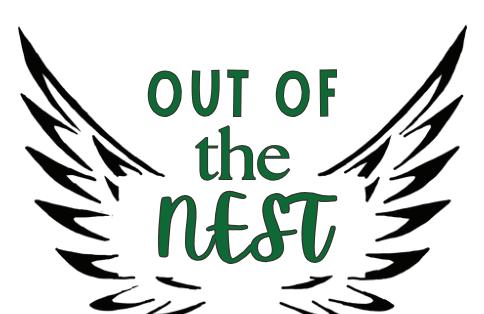
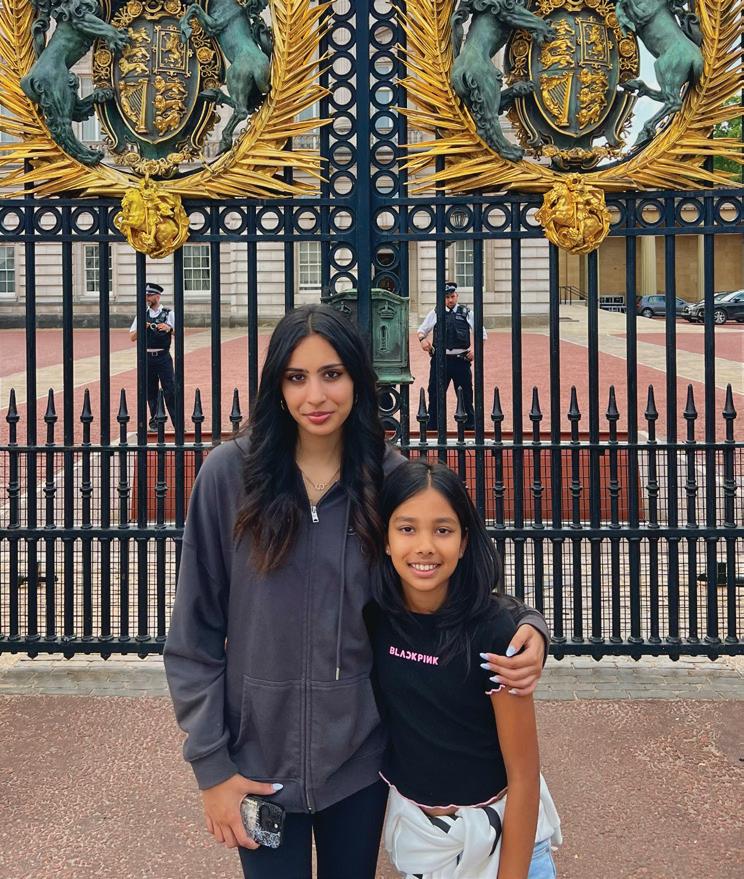
This summer, I boarded an 11-hour flight and landed in London for a short but exciting adventure.
Just hours after landing, we took a tour along the Thames River and marveled at the row of ancient bridges connecting famous landmarks like the Tower of London and Big Ben.
After visiting countless buildings, we wanted to move past sightseeing. Our search for an authentic London experience led us to Harrods, a five-story department store with restaurants and tea houses on every floor.
In the evening, we dined at The Shard, the tallest building in the city. Although the portion sizes were tiny and fries were adamantly called chips, the food was incredible. Another culinary highlight of my first day was enjoying high tea, a luxurious experience complete with tiny finger sandwiches and an assortment of delicate pastries.
The next day, we took a brief detour to Scotland, where we went on a whiskey tour at a local distillery. A seven-hour train ride through the countryside brought us back to the bustling streets of London. We entered the Dungeons of London for a theatrical journey through European history. As soon as we went underground, our phones stopped working and we stepped into a conspiracy plot to murder the King.
Our trip continued with a day spent at the Harry Potter Experience at Warner
Bros Studio. We ventured into movie sets and finished our journey at Hogwarts Castle, which was surprisingly small in real life. I enjoyed the experience but found it slightly underwhelming; it was completely self-paced which made it difficult to get a ‘behind-the-scenes’ perspective.
We spent our final evening at a gnocchi-making class at the Jamie Oliver Cookery School, where we learned how to perfectly shape fluffy pillows of potato. Visitharkeraquila.comforfullarticle.



On our way to Vancouver, my family and I embarked on an impromptu stop in Seattle. Our first stop was the Chihuly Garden and Glass, where the intricate glass designs left us in awe. However, after a while of just staring at the glass, each piece grew monotonous to our untrained eyes. We then drove to the West Hylebos wetlands to take a secluded, peaceful stroll on a boardwalk floating above patches of swamp and damp grasses.
We said goodbye to Seattle at the Woodland Park Zoo. I was charmed by its immersive experience — every section of the zoo transported me to different environments, each filled with unique trails, trees and greenery.
Leaving Seattle, we began our drive to Vancouver. On the way, we passed through Chuckanut Drive in the misty northern mountains, where we were greeted by the breathtaking sights of the lake gently lapping at the rocky beach.
One in Vancouver, we explored Capilano Suspension Bridge Park and the temperate rainforest. We slurped on chicken noodle soup for lunch at the classic Canadian fast food restaurant Tim Hortons before driving to Stanley Park to see its lagoons. We ended our stay with a whale watching cruise on a rickety ship.
Overall, the trip was colorful and engaging. I saw lots of beautiful sights, especially in the nature of the Pacific Northwest. We all had a great time, and I would definitely visit both cities again.

suhani gupta & emma li
Women are underrepresented in the music industry, making up only 38.4% of Billboard’s Hot 100 year end chart. This summer, however, female musicians found their way into the charts, from Sabrina Carpenter’s “Espresso” to Chappell Roan’s “HOT TO GO!” to Charli XCX’s Brat phenomenon. Their music became cultural moments, dominating social media.
Sabrina Carpenter kicked off this summer with her hit song “Espresso.”
On June 7, she released “Please Please Please,” which reached number one on the Billboard Hot 100. Longtime fan Christy Ma (11) fell in love with Carpenter’s songs after first seeing her on the show Girl Meets World.
“It’s very smart the way that Sabrina Carpenter is marketing herself now because currently there’s a dearth of energetic pop music,” Christy said.
Another artist who rose to fame this summer after years of unsuccessful releases was Charli XCX. With its ingenious marketing and catchy electropop beats paired with themes

such as womanhood, trauma and selfconsciousness, her new album Brat dominated social media and gained critical acclaim.
Through Brat, Charli XCX exposes a new side of herself with deeper and more introspective lyrics. Senior Avayna Glass appreciates the lyricism of the tracks.
“I can really resonate with her honest lyrics and the way that she presents herself so openly and honestly,” Avayna said. “I don’t think you can find a party girl album that has such vulnerable lyrics in it.”
Eilish has seen her own popularity rise recently with the release of her album, Hit Me Hard and Soft. It debuted at #2 on the Billboard album charts on May 17, and currently remains ranked in the top 5.
Hit Me Hard and Soft is not only Eilish’s most successful album in her career, but it also represents an important moment for her. In the lead single “Lunch,” she comes out as queer.
Lesbianism has been making rounds in the musical zeitgeist, not only with Eilish, but also with lesbian synth-pop star Chappell Roan. Visit harkeraquila.com for full story.
In the United States, the risk of unemployment can prevent many people from leaving the corporate world, even if frustrated in unfulfilling jobs. For immigrants in particular, starting their own business can be daunting due to structural inequalities.
Restaurateur and chef Zareen Khan broke this mold, starting her business in the hospitality industry. By building herself up from a place of discontent in her corporate job and taking small steps to achieve her goals, she founded her restaurant “Zareen’s.” Now, she inspires others to follow their own path.
When she first moved to the United States, Khan worked a product management job at the Race Management Solution company. After 12 years in corporate, she found herself dissatisfied with her experiences, leading her to start her own business.

Khan began by teaching herself how to make Pakistani and Indian dishes at home, using her knowledge of cooking from her upbringing in Pakistan. Her family members were her first students, and she eventually expanded her teaching to Facebook classes. After experimenting with recipes, she eventually stumbled
“It’s nice to connect with my culture and eat a wide variety of Indian dishes.”

upon her pivotal dish: the kebab.
“The kebab led to the restaurant,” Khan said. “When I was doing the kebab deliveries, the students and customers who took the kebabs said, ‘Do you want to cater?’ So I’m like, ‘Yeah, sure.’”
After four years of sharing a catering space, Khan opened up her own kitchen. She originally did not plan to turn the building into a restaurant, but when she received the keys for the first time, she had a change of heart.
“You start out small and then let it grow organically, and sometimes you never know how it will end,” Khan said. “I never thought I’d have a restaurant, and then I started doing the cooking classes. I never thought I’d have a restaurant, and then I had the kebabs and the catering. Now, I have three restaurants with a fourth one opening up soon.”
Still, the restaurant business presented Khan with many difficulties. Without her persistence during the first six months, the restaurant might not have stayed afloat.
“I had no idea how hard the restaurant business is,” Khan said. “I was
working from eight in the morning to seven at night, seven days a week. It was really intense, and it was challenging, but we somehow survived.”
Her struggles did not end there. At times, Khan dealt with feelings of inadequacy due to her inexperience in the restaurant industry. To counter, she stopped giving in to doubts coming from herself and others.
“Once, a friend of mine said, ‘How are you going to start your restaurant? There are so many people who are so much better than you,’” Khan said. “I don’t listen to these kinds of people, nor do I allow myself to start thinking like that. As soon as those thoughts come to my head, I just stop myself. It’s never one thing that makes you successful. It’s the whole package.”
Now, her restaurant flourishes with positive reviews and media coverage. Khan crafts each dish with the “love and integrity” promised by her restaurant. Restaurant-goer Aishani Singh (12) appreciates the ambience of Zareen’s and often visits it with her parents.
“I always love going out and eating with my parents, and Zareen’s has this lovely atmosphere where you can really treasure the memories that you spend with them,” Aishani said. “It’s really nice to
connect with my culture and eat a wide variety of Indian dishes outside of what my parents or I know how to make.”
Alongside the meals, her restaurant also displays a book wall, where she highlights new books written by members of her community. She promotes the books of both South Asian women and locals. Khan empowers immigrant voices by raising her own. Her work inspires others to work toward their dreams.
“My biggest success is inspiring other people,” Khan said. “I feel very fortunate that I can be an example to others in a positive way. If they’re not happy with where they are in their life, they can always start somewhere small and grow like me. I feel proud being a Pakistani woman to give a representation of Pakistan and empower other women.”
Visit harkeraquila. com for full story.

disha
A buzz of excitement permeates the gym, starting backstage and traveling upstairs, where rows of students filter through the double doors in formal attire. With a quick cheer, the newlyformed Capriccio choir takes the stage and officially begins Matriculation.
Capriccio members met every day of the week leading up to Matriculation to learn the song and get their bearings as a new choir. During rehearsal, they bonded through facial and vocal exercises before learning their song.
“ I
like to have traditional music, but I also like to reach out to unusual things.”
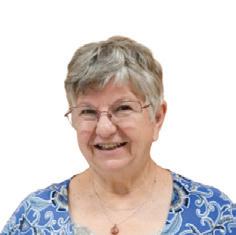
SUSAN NACE
VOCAL MUSIC TEACHER
To master the melody, altos, basses and sopranos spent their first rehearsal practicing their sections individually and then harmonizing. Upper school vocal
because of its energizing qualities.
Capriccio (n.): A musical composition, usually lively and whimsical in spirit
“I’m always doing interesting repertoire,” Nace said. “I like to have traditional music, but I also like unusual things. We’ll be doing some work that our other choirs have never even looked at before. For example, we’re going to be doing a song in Arabic. There are very few choral pieces in Arabic. In fact, this is the first one I’ve ever encountered.”
By shining a light on several cultures that are often underrepresented in choral music, Capriccio wants to redefine the stereotypical interpretation of the genre.
“Most choral programs do things in French, Spanish, Italian, German and English,” Nace said. “I think it’s important that we expand those horizons as much as we can because choral music is incredibly European and traditionbound. It doesn’t have to be that way.”
Jazz Band took the stage alongside Capriccio. With multiple instruments in
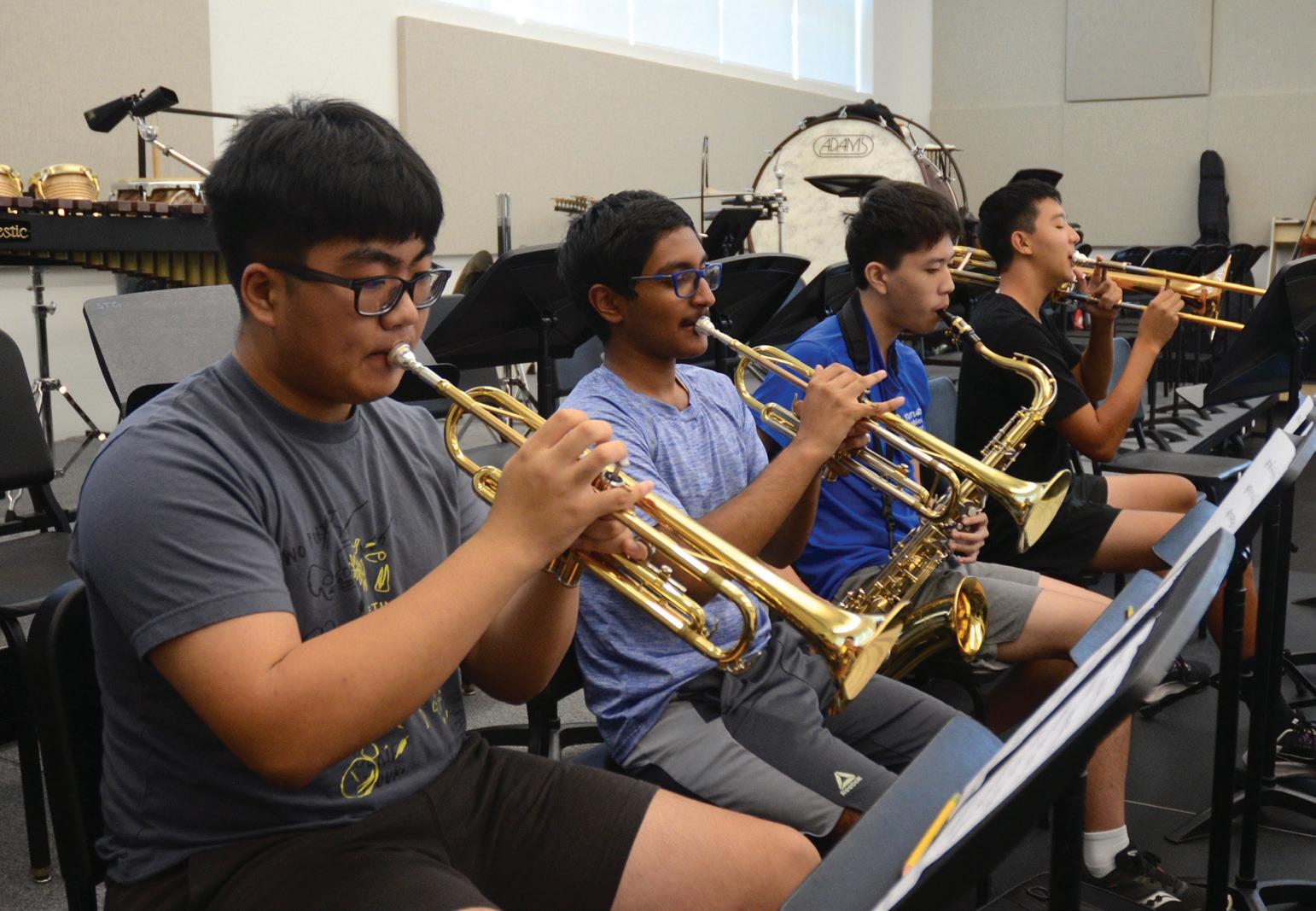
Jazz band, coordination is key. Rehearsals focused on maintaining rhythm, cohesion and musicality.
As Jazz Band coordinated with Capriccio, they required extra rehearsals in advance to refine their pieces.
During joint rehearsals, the students
focused on how to create the best sound together. Yinan Zhou
expressed his anticipation for the final performance at matriculation during rehearsals.
“The rehearsal went really well,” Yinan said. “I’m excited for Friday. I trust everyone to do a really good job.”
Dots, lines and dashes on sheets of paper may not seem like much to the casual observer, but to music teacher Susan Nace, they work together to form magnificent compositions and wondrous melodies.
Teaching music involves a lot of performance scheduling and music selection, so Nace typically begins her preparation the spring before summer starts.
She first sifts through different kinds of pieces that could possibly fit Harker’s ensembles. At the same time, she also maps out the calendar for the new school year, planning rehearsals and concerts.
“
We’re going to learn together, explore together, wander together, and we’re going to have a great time.”
“For some things, we can only choose once we get to see our students because we don’t know what their capabilities are,” Nace said. “But, for groups like Downbeat and Capriccio, we start looking at music really early. It’s just a matter of getting things going.”
Einstein’s general relativity equation. The Hubble Space Telescope surveying purple hazy galaxies. Los Alamos. NASA. These are all words you can expect to spot on the assorted physics and astronomy posters plastered across the walls of Eric Nelson’s classroom in Nichols 312. For him, the value of classroom decor lies in the subjects contained within, not just the look or style.
“Everything in here is a talking point. At some point during the semester, I can point to it in order to bring it up,” he said.
Dr. Nelson teaches a wide range of classes, including AP Physics C, Modern Physics, Astronomy and computer science electives like Neural Networks and Programming Languages. Although he works on tedious preparation, like populating calendars with assignments, one to two weeks before school, he begins planning the course curriculum several weeks prior.
This year, AP Physics C uses a new version of the textbook, so Nelson spent the past month migrating from the 10th edition to the 12th edition, realigning problem numbers and updating assignments, which takes around 40 hours of work. As for Modern Physics and Astronomy, he always makes sure to keep the course content up-to-date with the most recent scientific breakthroughs. Some
setting up decor. Among all of the items that live in her room in Patil 52, one of the oldest members is a Gregorian chant dating back to 1553, notated with blank ink on a sheet of sheepskin. This piece of musical history once served as a guide for choristers singing in a Roman Catholic church, but it has long since been relieved of its duties, now resting in a frame for students to see. Shockingly, Nace originally found this medieval relic for sale while shopping at a local flea market.
Her preparation further extends to sorting through and
of this year’s pressing questions include galaxies forming earlier than expected
“Everything in here is a talking point. At some point during the semester, I can point to it and bring it up.”


and the inconsistencies with tachyons, hypothetical particles that travel faster


“I was looking for something in particular, and I walked by and saw it. I went back, looked and thought, ‘This can’t be real,’” she said. “That was maybe around 2005. I imagine that it belonged to a professor, and he may have died in his estate and somebody went to the estate sale and it’s here now.”
than the speed of light.
Whether she’s teaching choir, composition or music theory, Nace always makes sure students feel at
“Newtonian mechanics hasn’t changed since around 1650 and is unlikely to change in the immediate or distant future,” Dr. Nelson said. “But, modern physics always gets updates because things happen every year. There’s always something new.”
As the year progresses, he likes to set up demonstrations so students can better grasp concepts by seeing them in action. For example, he uses air carts and marble roller coasters as part of kinematics lessons in AP Physics C. Across all the decor in his classroom, he most cherishes his plastic flying pig that hangs from the ceiling above.
“It has been dropped, broken and damaged so many times that it’s being held together with super glue and duct tape at this point in time,” Dr. Nelson said. “I use it to discuss uniform circular motion outside the plane of motion because it flies in a cone. I also have a flying cow, but it doesn’t have that same feel as the flying pig.”
home while in her classroom. Her wide assortment of furnishings helps imbue this spirit, from posters with welcoming and inclusive messages to a row of multi-colored banners strung across the ceiling, featuring the words Courage, Joy, Spirit, Celebrate, Community, Equality and Diversity.
“One of our librarians came in once, and she said it feels so peaceful here,” Nace said. “That’s the attitude I want to bring to my students. We’re going to learn together, we’re going to explore together, we’re going to wander together, we’re going to ask questions together, and we’re just going to have a great time.”


Anthony Silk is the chair of the math department and a calculus teacher, but his classroom’s interior suggests he’s more than just a math whiz. In fact, the subject takes up only a sliver of his space, leaving students with a whole new indoor world and all four colorful corners to conquer.
“My initial plan was no math in the room,” Silk said. “The theme is very conceited. The theme is me. It is things that make me happy and relaxed, so my hope is that it will make students feel relaxed.”


“ It is things that make me happy and relaxed, so my hope is that it will make students feel relaxed.”
Silk allows his room decor to reflect this freedom of expression. Along with a Hot Wheels track along the side of his room, dozens of Disney-branded Band-Aid boxes stacked behind his desk, two wall-mounted cereal and hot chocolate puzzles reflecting his love for both and a complex Lego model of the Atlas rocket, he also displays his two stuffed teddy bears named Bear Minimum and Bear Maximum. Since Silk acquired the former bear from a
Harker picnic event and the latter as a gift from a student several years ago, both have become adorable staples of his classroom.
“Whenever I’m teaching minimum or maximum, they come in,” Silk said. “One of the things that I really like about Bear Minimum, other than the fact that he’s super cute and people remember him, is that he’s a nice little comfort. A lot of students hold him.”
As department chair, Silk starts preparing for the new school year as early as May and June when he administers student challenge and placement exams for different levels of math classes. Then, at the beginning of August, he arranges meetings with the math department
and facilitates the curriculum planning process for other teachers.
The second half of this preparation also involves setting up the classroom: Silk populates a “Silk Stuff” bulletin wall with pictures to showcase what he did over summer vacation, rearranges the numbered desks and writes lectures and tests for his calculus courses. As for his second semester Engineering elective, he begins preparing its material over winter break.
“That’s what all the teachers are doing, just to get our rooms ready and our brains ready,” Silk said. “My room is a little crazier than some of the math rooms. I’ll clean up, start throwing stuff out and putting new stuff out. But again, a lot of it is fortunately the same.”
All in all, Silk infuses his room and
teaching style with a fun, humorous approach to life that he hopes will spill over to his students.
“The idea is when you’re in here, you don’t have to think, ‘I’m here because I’m supposed to be learning something all the time, and if I’m not learning something right now, then something’s wrong,’” Silk said. “I want them to think school is about life. I’m hoping that they can make some connections there.”
“
The door to history teacher Byron Stevens’ room, Shah 409, appears unassuming to the average passerby. To his students, though, it’s no secret that he’s an avid Notre Dame football fan. If he wasn’t vocal enough about the college team, his choice of wall decor is sure to pique interest: a horizontal lineup of multicolored pennant flags showcasing Notre Dame’s annual football schedule, meticulously hung in chronological order above his whiteboard.
“A couple of years ago, I started buying the pennants on Amazon, at Varsity Shop or College Shop,” Stevens said. “Over the course of the year, I have to do the climb of shame: I climb up there and I turn the pennant upside down if we lose the game.”
A second look around the room reveals that the pennants aren’t the only topic of conversation. Stevens displays several more whimsical trinkets throughout his room,


including but not limited to a melting clock on his desk referencing “The Persistence of Memory” painted by Salvador Dali, a Sigmund Freud action figure still encased in its original packaging, a demotivational calendar and two large, surprisingly real Boston fern plants suspended from the ceiling with backstories of their own.
“I came here in 2015, and it was in the midst of the Democratic primaries for the election, still kind of between Hillary Clinton and Bernie Sanders,” Stevens said. “I noticed this nice window and I thought, ‘yes, it’s perfect.’ I had a student who said these ferns needed names, and Fernie was easy, and then we came up with Fillary. That’s funny because Fernie’s on the left.”
Stevens typically begins preparing his classroom in August and works on it for around a week. When students walk in for the first time in late August, he wants to set a tone of hard work while still encouraging a lighthearted learning experience right from the start.
I want my room to be a reflection of my sense of humor and let that come through in various ways.”
“I want my room to be welcoming but also visually stimulating, show a lot of history-related stuff but not exclusively, be a reflection of my personality and my sense of humor and let that come through in various ways.”

“The vibe I’m going for is serious but fun,” Stevens said.

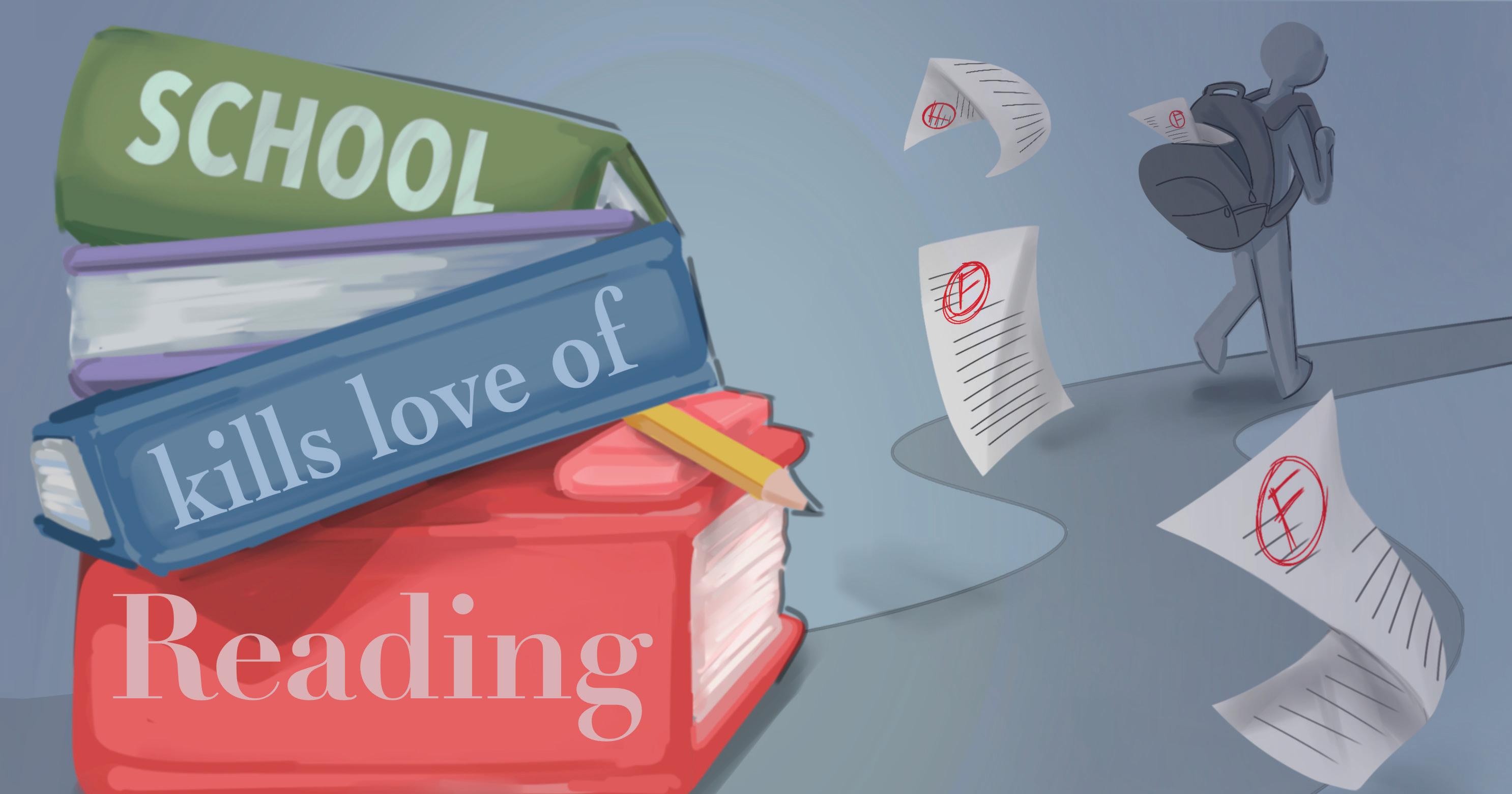
I step into my room, sitting down and skimming through my required reading. Eyes glazing over halfway through, I decide to take a procrastination break, pulling out my phone and scrolling to ease the boredom.
This routine is one that many high school students struggle with. The 2009 Programme for International Student Assessment concluded that attitudes toward reading soured in students at higher grades. In elementary school, reading came about from pure interest. When assigned reading is introduced in higher grades, the lack of freedom and often dull books give students less incentive to read. Higher levels of burnout, exposure to instant gratification and a general unwillingness to complete assigned tasks result in a shift in students’ view on reading. No longer is reading seen as a fun hobby; it has now become forever branded as work.
High school English classes are one of the sources of the problem. The
enjoyability of assigned reading is generally hit-or-miss. When students don’t enjoy the reading, they often don’t care about its deeper meaning. My (least) favorite example of this is "Home Fire." Though the book was about a very resonant topic, I felt that the unnecessary romance took away from the more important conflicts of the novel. As a result, every chapter was a slog, and when asked to analyze it, I felt that I had nothing to say.
Forcing an essay out of a student who feels apathetic about a piece only results in resentment and an empty essay that repeats obvious truths. Though the student practices logical reasoning, they do so in a way that doesn’t enrich their understanding, or does so in a surfacelevel way. Rather, that student will go home with a negative attitude towards reading that might persist even beyond high school.
To ensure that students actually care about a story, schools should select readings that most students will enjoy.
Genuine enjoyment leads students to be more inclined towards discussing and writing. My favorite assigned book was "Frankenstein," which I read last year. I enjoyed it for its themes (e.g. nature vs nurture) and gripping storytelling. Everyone had much to say about it, which made class discussions more fruitful and helped me write my essay easily.
“No longer is reading seen as a fun hobby. It has now become forever branded as work.”
The bottom line is: students need to like the books they read to nurture their love of reading and procure the best results learning-wise. Administrators who decide class reading list should focus on choosing books that will be popular with students. Teachers can sense how well-received a piece is through
I joined Harker in fifth grade. One of my first memories of that frankly overwhelming year was a math lecture with my classmates: one not held in school by Harker faculty, but in a dingy room just outside Great America by Poh Shen Loh, the former coach of the US International Mathematical Olympiad team. If you couldn’t tell, my parents dragged me there and I quickly zoned out, fiddling with a loose screw on the plastic chair.
Praise was a reassurance, a confirmation that I'd stick around in people's minds for just a little longer.”
But I really started paying earnest attention when near the end of his presentation, Loh grandly declared an equation he believed amounted to the success one achieved in life: “how many people remember you after you die multiplied by how long they remember you for.” I froze, struck by the statement’s
simple profundity. The most notable figures in history — Shakespeare, George Washington, Michael Jackson, even — live on in the memories of millions who utter their names to this day.
To my 12-year-old self, joining a brand-new school at the dawn of adolescence, Loh’s words could only mean one practical thing: I had to be as wellliked as possible. This simple equation imbued in me a voracious appetite for praise. Praise was a reassurance, a confirmation that I’d stick around in people’s minds for just a little longer.
I convinced myself that time spent gaining someone’s favor was more impactful than time spent for myself. A friend asked me to find a page number for an uncited quote. Throwing down my own essay, I spent an eternity leafing through my book just to resurface proudly exclaiming, “Forty-two!” I’d then glance at my half-finished essay, left untouched for several minutes, and start typing quickly, driven by adrenaline, shame, or a mix of both.
As the years passed, my neverending to-do list gobbled up more and more of my time. Loh’s words faded from the foreman directing my mind to a quiet presence in the back of my head.
It wasn’t until spring of sophomore year that the equation finally reemerged. Ever since I entered high school, I had been elected and re-elected to student council. The more I led meetings, organized fundraisers and staffed raffles, the more I knew leadership was for me. There was nothing else I was willing to throw down homework, hang up on a friend, or take dinner to my room for. So when I couldn’t find my name on the 2425 student council list, I was devastated. I thought back to Loh and his equation. With this loss, I’d surely have lost all of my impact.
Yet now, writing this piece, I’m finally able to reconcile Loh’s equation with my failure. Yes, I’d lost. Fair and square. But for two years, I had received irrevocable proof that every part of leading — the glamorous, the unsung, the ugly — was made for me. I was willing to work, and this work was the way I achieved Loh’s coveted impact, if only temporarily.
class discussions. After trial and error, administrators should be able to compile a list of successful books that they can use for years after, and that students can enjoy, too.
As a not picky reader myself, I will be the first to admit that books can be added to the curriculum for their unique perspectives and elegant prose. Classic books that are simply too culturally pervasive to exclude should be kept — think "Lord of the Flies." These books can lead to students broadening their horizons and are therefore nonnegotiable. But, all the leftover spaces in the list can be redirected toward books that spark enjoyment.
In the busy landscape of high school, students don’t need pressure to read boring books that spoil their reading experience and add to their workload. Instead, a more enjoyment-centric attitude toward reading in classrooms will make it more likely that students will continue reading even after high school. Visit harkeraquila.com for full story.

I can’t deny that for whatever reason out of my control, how I’d led on council in the past year lost me a portion of the vote. If you asked fifth grade me if this was a failure, he would absolutely say yes. But if you ask me now, I’d reconsider. While my immediate impact diminished, I had nevertheless discovered one way I’d want to make an impact in the future. So, I’d like to propose a footnote to Poh Shen Loh. Indeed, success equals how many people remember you after you die multiplied by how long they remember you for. But only if you’re doing what you love.
Visit harkeraquila.com for full story.

Editors-in-Chief
Victor Gong Katerina Matta
Managing Editors
Young Min Jessica Wang
Claire Zhao
News Editors
Lily Shi Jessica Hu
Features Editors
Janam Chahal Mendy Mao
A&E/Lifestyle Editors
Suhani Gupta Disha Gupta
Opinions Editors
Mihir Kotbagi Emma Li
STEM Editors
Ashley Mo
Jonathan Szeto
Sports Editors
Eva Cheng Tiffany Zhu
Senior Copy Editor
Saahil Herrero
Copy Editor Jeremy Peng
Photo Editor Kairui Sun
Multimedia Editors
Charlie Wang Claire Yu
Columnist
Anwen Hao
Adviser Whitney Huang, CJE
Aquila Editors-in-Chief
Alison Yang Emma Milner
Aquila Managing Editors
Hima Thota
Aishani Singh Isabella Lo Gabe Sachse
Charlize Wang
Humans of Harker Editors-in-Chief
Sidak Sanghari
Jonathan Xue
Humans of Harker Managing Editors
Aryana Bharali
Ella Guo
Humans of Harker Profiler
Vivek Moorjani
Reporter
Angelina Burrows
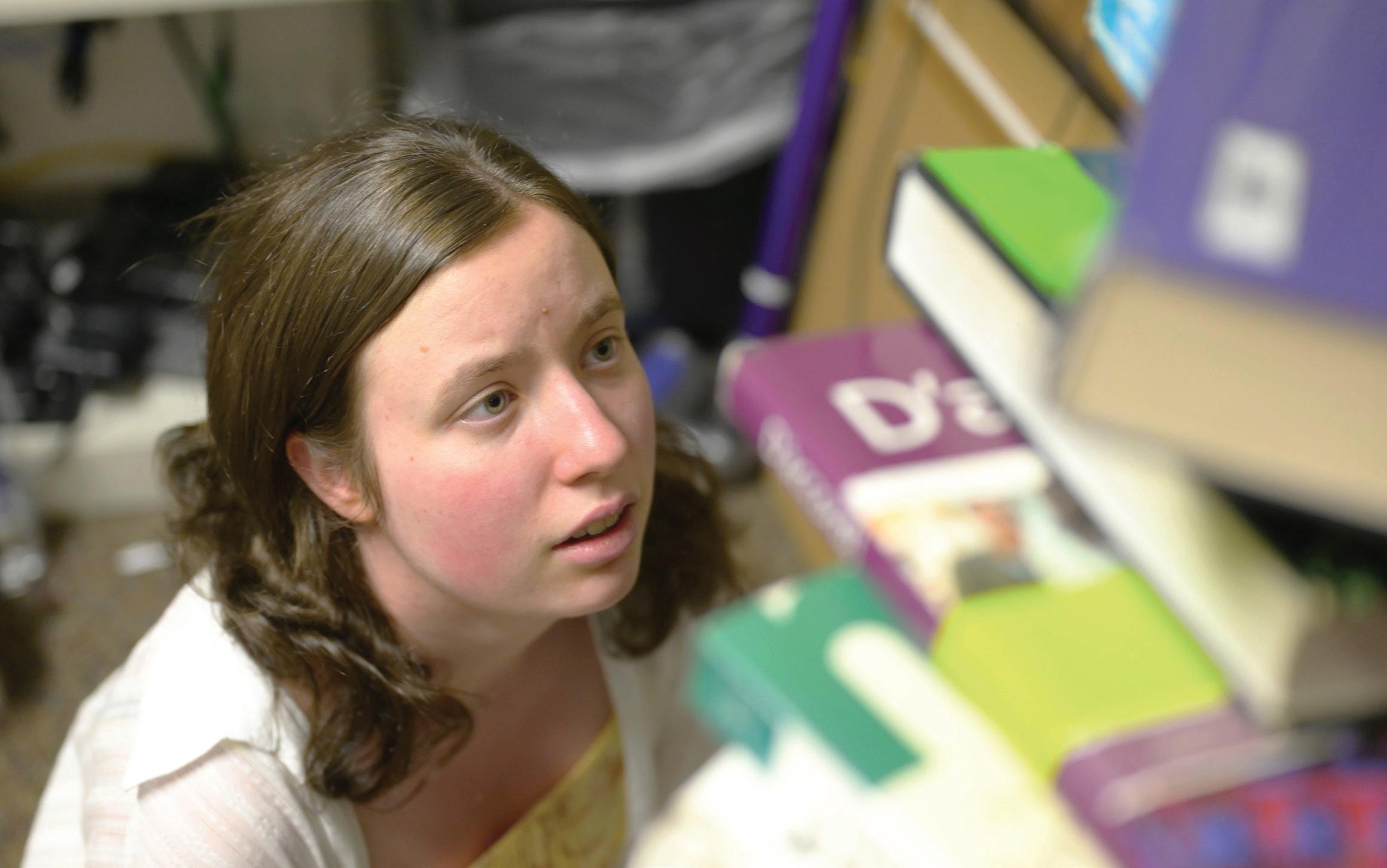
Scanning the MBS online bookstore for the school year’s course materials, one word jumps off the screen: REQUIRED. The bright red font and all-caps letters precede each title. You check the box labeled: “Add to cart,” watching the price total climb higher with each additional item. When the package arrives, you organize each textbook neatly on your shelf. As the school year progresses, the same books lie untouched, their freshly printed pages gathering dust.
Students acquire new textbooks each year, only to discover that a significant number of them are nonessential. According to a Harker Aquila Instagram poll, 82% of 109 polled Harker high school students used less than half of their textbooks more than once a week, with 48% of students using fewer than a quarter of their required materials. Furthermore, 93% of respondents purchased textbooks that they never used over the school year.
This underutilization of course materials leads students to question their steep cost. Fifty-nine percent of student
respondents spent upwards of $150 on textbooks for the upcoming year and 29% of students spent over $300. The lack of value that students find in textbooks, however, invalidates their price.
The excessive cost of textbooks also leads students to turn to other means of acquiring their required books, including illegal piracy. Twenty-six percent of poll respondents sourced pirated versions, compromising their integrity as well as their cybersecurity, rather than spending upwards of hundreds of dollars on textbooks. Even if students source their textbooks from trustworthy online marketplaces, buying class texts only to underutilize them is wasteful.
To solve this issue, teachers can send out a poll at the end of the year asking whether students found their textbooks useful and reevaluate their material lists. Based on the responses, certain texts can be marked as optional resources rather than required on the MBS online bookstore. This way, students will be aware of which textbooks are not explicitly used during the school year. Those who want to use the textbook as
an additional resource can do so knowing the benefits and trade-offs of their purchase. If the material is intended merely as a supplement to the course, teachers can find online study resources that are freely available and supply those to students instead.
A voluntary textbook swap at the end of the year could help address the waste. Ninety percent of students polled expressed that they would be willing to recycle their textbooks for others to use. Eighteen percent of polled students responded that they receive textbooks passed down from friends and family members. Organizing an exchange throughout the school would make this a more widely popular option, allowing more of the student body to access this sustainable system.
Textbooks remain a cornerstone of many curricula. With proactive involvement from the community to evaluate and share academic resources, we can ensure that students only invest in materials that genuinely enhance learning instead of merely acting as burdensome expenses.

The Winged Post is published every four to six weeks except during vacations by the Journalism: Newspaper and Advanced Journalism: Newspaper courses at Harker’s upper school, 500 Saratoga Ave., San Jose, California 95129.
The Winged Post staff will publish features, editorials, news, sports and STEM articles in an unbiased and professional manner and serve as a public forum for the students of The Harker School. Editorials represent the official opinions of The Winged Post. Opinions and letters represent the personal viewpoints of the writers and do not necessarily reflect the opinions of The Winged Post. All content decisions are made by student editors, and the content of The Winged Post in no way reflects the official policy of The Harker School. The opinions expressed in this publication reflect those of the student writers and not the Harker board, administration, faculty or adviser.
Letters to the Editor may be submitted to Manzanita 70 or emailed to harkeraq@gmail.com and must be signed, legible and concise. The staff reserves the right to edit letters to conform to Post style. Baseless accusations, insults, libelous statements, obscenities and letters that call for a disruption of the school day will not be considered for publication. Letters sent to The Winged Post will be published at the discretion of the editorial staff.
The Winged Post is the official student newspaper of Harker’s upper school and is distributed free of cost to students. It provides a student voice forum for members of our community. Students hold the copyright to work published in Harker journalism publications. Visit The Winged Post online at www.harkeraquila.com Follow us on Instagram @harkeraquila
2016-2017
CSPA Gold Crowns: 2024, 2023, 2019, 2018, 2016
CSPA Silver Crowns: 2022, 2021, 2017



Welcome to the 2024-2025 school year! Winged Post looks forward to inviting our new frosh class onto campus and welcoming back our sophomore, junior and senior friends.
As we welcome the coming of fall, we offer a look into some of the highlights of summer vacation, from the recent Paris 2024 Olympics to features on students’ travels abroad. This first issue of the newspaper embraces the back-to-school spirit through coverage of matriculation
and class trips, provides a peek into how teachers prepare for their classes and concludes with a collage of highlights from the first day of school.
Our strategic team is excited to continue serving the Harker community by spotlighting events and showcasing stories through the remaining five issues of the Winged Post this school year. Please feel free to reach out with any story ideas, questions or concerns to harkeraq@ gmail.com, or to offer feedback using the adjacent QR code. We look forward to reading your comments!
FRONT PAGE: ASB and Student Council ran the boba fundraiser, not Green Team.
STEM 16: "Green team" in the second subhead should be capitalized as "Green Team"
SPORTS 19: Multiple misspelled names in "24" graphic
• “Jonothan Zhang” (bottom) should be Jonathan Zhang
• “Michael Ccang” ("24", left) should be Michael Chang
BACK PAGE:
• "Sea lion" is actually a seal
• "Cool off at the beach article" cuts off at the end
• “Lended" should be "lent"
CORRECTIONS POLICY:
Our staff strives to represent our community fairly and conduct accurate, truthful storytelling. We list all errors of an issue, along with the page number of that error, in the next issue’s corrections box. Feel free to provide feedback via the QR code to the right.



Andean glaciers retreat to record levels
A new study published on Aug. 1 revealed that glaciers in the high Andes mountains in Colombia, Peru and Bolivia are shrinking due to global rising temperatures caused by climate change at a level not seen in more than 12,000 years. A team of scientists, led by former University of California, Berkeley graduate student Andrew Gorin, measured the age of recentlyexposed bedrock using beryllium-10 and carbon-14 nuclide levels, which showed that the glaciers had been covered by ice during at least the entire duration of the 11,700-year-old Holocene Era.

Perseverance spots potential signs of life on Mars rock
The National Aeronautics and Space Administration (NASA)’s Mars rover Perseverance discovered and collected a unique rock with possible signs of ancient microbial life at Neretva Vallis on July 21. Perseverance’s Scanning Habitable Environments with Raman and Luminescence for Organics and Chemicals (SHERLOC) instrument detected carbon-based compounds within the rock, which the rover’s science team named Cheyava Falls. Perseverance also found veins of white calcium sulfate deposits, an indication of running water.

FDA approves novel brain cancer treatment
The Food and Drug Administration recently approved vorasidenib, a drug used to treat grade 2 isocitrate dehydrogenase (IDH)-mutant gliomas, a previously untreatable brain tumor which can lead to serious disability and death. Vorasidenib works by slowing the development of the mutated IDH gene, which slows the spread of cancer. Clinical trials showed that study patients experienced far less cancer progression after the treatment period. In the future, the researchers hope to observe longer-term outcomes of Vorasidenib and continue clinical trials about the drug.

US judge rules Google search illegal monopoly
DC District Judge Amit Mehta ruled that Google’s search engine constitutes an illegal monopoly by suppressing competition and limiting innovation on Aug. 5. Currently, Google controls nearly 90% of the market for general search, and nearly 95% of the market for mobile devices. Parent company Alphabet plans to appeal the ruling in the near future, arguing that this dominance is a consequence of Google simply offering a superior product as opposed to any malicious business practices. This decision mirrors the influential 1998 antitrust judgment against Microsoft.
understanding of abstract concepts and turn them into hands-on experiences.
Imagine stepping into a chemistry lab, feeling the snap of blue nitrile gloves around your fingers and draping a pristine white lab coat over your everyday school outfit. As a high schooler, interning or working at a lab can offer insights into what it’s like to be a real researcher and offer exciting opportunities for hands-on learning. At school, science is about facts and formulas — but in the lab, it’s all about discovering the unknown.
Summer internships and research programs provide a gateway for high school students to enter this world and gain invaluable lab experience.
“It’s really surreal when you can experiment with real things in front of you compared to just reading about them.”

MISHA SINGLA (11) STUDENT RESEARCHER
Misha Singla (11) attended the University of California, Santa Barbara’s Summer Research
quantify DNA and specific cells with wet-lab research.
“At SRA, I spent so much time in the lab, learning lab skills like micropipetting and testing pH, and how to use different machines,” Misha said. “It’s really surreal when you can experiment with real things in front of you compared to just reading about them.”

At college labs, students can use cutting-edge, specialized equipment that surpasses what most high school facilities offer. These include advanced tools such as flow cytometers for cell analysis, CRISPR technology for gene editing and high-performance liquid chromatography (HPLC) machines to separate and quantify components in chemical mixtures. Additionally, students can even work with animal models, whether that be simple organisms like fruit flies or more complex mammals like mice, to observe how disease or drugs affect

Student researcher Nisha Padhi (10) attends the Aspiring Scholars Directed Research Program (ASDRP), a program where she has the unique opportunity to work in the lab on novel organic chemistry research under the mentorship of Dr. Edward Njoo. Over the summer, she learned various techniques like how to synthesize chemical compounds, how to isolate a specific product through column chromatography and how to determine the exact purity of a product
“At [ASDRP], I focus on small molecule synthesis for drug discovery,” student researcher Nisha Padhi (10) said. “I have access to really cool technology that isn’t available at Harker, like [nuclear magnetic resonance] spectroscopy and programs that allow us to test on real mice. It’s cool to have access to these types of things as a high school student and be able to conduct experiments on a daily basis.” Visit harkeraquila.com for full story.

2200 years ago, Emperor Huangti authored “Huangdi Neijing” and introduced an ancient medicine that not only has withstood the test of time but also continues to shape modern medicine. Acupuncture and Chinese herbal remedies date back to nearly 100 BCE — but what’s the science behind these practices?
“
Acupuncture definitely works the best. You can go to acupuncture for insomnia, back pain, chronically dry eyes.”

LI (12)
CHINESE MEDICINE USER
In traditional Chinese belief systems, Three Treasures contribute to health and longevity: Jing, the essence that represents development, growth and reproduction; Qi, a source of vital energy which must flow freely

throughout the body; and Shen, which embodies consciousness and awareness. If any of these are blocked, there is an imbalance between yin and yang, leading to sickness. Many people turn to Chinese medicine and therapy to restore harmony in the body.
Acupuncture is a form of Chinese therapeutic medicine that treats both mild and chronic pain. It involves inserting needles into specific points
located pathways on the body called meridians. The human body has twelve primary meridians, correlating to different locations of the body. These pathways also maintain the flow of Qi by connecting the body through a pathway of sensory nerves. Acupuncture releases endorphins, the body’s natural painkillers, which contribute to acupuncture’s relieving and beneficial qualities.
Visit harkeraquila.com for full story.

n the sports world, sustainability is a buzzword. Practically every major sporting event now features a sustainability statement containing generic eco-friendly pledges. The 2024 Paris Olympics, touted by organizers as the “greenest ever Games,” likewise promised numerous policies to reduce environmental impact. But are these measures truly effective, or are they simply a marketing façade?
The Paris Olympics has faced
million tons of carbon dioxide, and the 2012 London Olympics and the 2016 Rio Olympics each produced around 3.5 million tons, equivalent to the total amount of carbon emissions from the entire city of New York in two weeks.
The regularly vast amount of greenhouse gas emissions stems from the construction and maintenance of huge new stadiums, food production for millions of spectators and competitors and international travel from all over the world. The Olympics, which hosts over 60 sports and thousands of athletes for three weeks, ranks among the highest Games. In the future, the Olympics hopes to make that number zero.





Some of the new sustainability policies, however, stirred controversy. In an effort to reduce carbon emissions, organizers planned to replace traditional air conditioning units in the Olympic Village with geothermal cooling. But after several teams raised concerns about athletes struggling to sleep in a heat wave, organizers permitted the installation of air conditioning units for a fee.
In a future low-carbon world, the idea of the Olympics is under scrutiny. Some argue that in order to truly become environmentally friendly, the Olympics must fundamentally reduce its size and scope or decentralize. By distributing the event over several countries at once, the scale of the Games and international travel would decrease while also
Visit harkeraquila.com for full story.


Intel’s stock plummeted over 40% this past month, marking its worst fall in 50 years. The company’s per-share price tanked 26% in just a day after it announced a $10 billion cost cutting plan in its second quarter report on Aug. 1, slashing dividends and laying off 15% of its workforce. This comes as a major setback for the Silicon Valley-based company as it struggles to maintain its once dominant position in the semiconductor industry.
Once a global leader in chip manufacturing, Intel has steadily declined over the last few years. Technologically, the company is fighting an uphill battle. They specialize in producing central processing units (CPUs), the component responsible for performing calculations in a computer. But, in recent years, Intel has gradually faded out of focus as graphics processing units (GPUs), which can compute in parallel, now offer more processing power. Their CPU technology now also lags behind competitors like Advanced Micro Devices (AMD).

SELL, SELL INTEL Intel lost more than $30 billion in market value after the technology company announced that it would cut 15% of its workforce due to financial struggles.
Upper school economics teacher Samuel Lepler notes how technological shifts have led to the demise of many older companies, quoting renowned economist Joseph Schumpeter’s concept of “creative destruction,” destroying the old to create the new. For instance, computer software company Hewlett Packard (HP), often recognized as the “founder” of Silicon Valley, once held
the top spot as the world’s leading PC manufacturer. But poor leadership and stagnant development led to downfall.
“A lot of the original Silicon Valley companies used to be just absolute dominant forces,” Lepler said. “Then as new technologies and startups came about, they really declined. It sounds to me that it’s a similar tech revolution.”
Visit harkeraquila.com for full story.




USA Men’s National Basketball Team enters fall-off era
Golden State Warriors Point guard and American basketball star Stephen Curry pulls up from deep, sinking a ridiculous three-pointer over a doubleteam to seal the win. With his shot, the U.S. men’s national basketball team beat France 98-87 to win the Olympic gold medal on Aug. 10.
To earn the gold, the U.S. team beat South Sudan, Puerto Rico, Brazil and France once, and bested Serbia twice, a perfect record which would lead most to believe the roster of NBA superstars breezed through the tournament. Surprisingly, the team did not coast on such an easy road, most notably trailing by 17 points in the semi-final against Serbia before crawling back in the fourth quarter and winning by four points.

For the U.S. men’s basketball team, a gold medal comes as the expected outcome. After six consecutive top prizes, any trouble at all on the path to gold appears a near-failure and a blemish on the legacy of all participating athletes. So why does that not hold true this year? The simple answer is that the rest of the world has caught up to American basketball, or, perhaps more saliently, age has caught up to the last dominant generation of American stars.
The fall-off of America’s young talent starts with the USA program’s lack of streamlined investments. While NBA players who hail from foreign countries invest heavily in talent identification and building a solid program, the U.S. relies on the luck of the draw. After all, America’s Amateur Athletic Union (AAU) teams and high schools regularly produce college and NBA-level talent seemingly at random. This does not allow for a direct pipeline of talent, though, and the U.S. basketball program would benefit from a more rigid process in preparing for events like the Olympics.
The rest of the world is here to stay at the top of the international basketball food chain. The only question that remains is how long the U.S. team can stave them off.
Visit harkeraquila.com for full story.


Just outside the Singh Aquatic Center, Harker’s swimming records decorate the cobble walls. With a closer look, you notice the same swimmer mentioned seven times. Three-time state champion and seven-time Harker record holder Ethan Hu (‘20)’s name, engraved in black lettering, serves as a timeless marker of his impact on the boys swimming program. While the pandemic cut his season short of grabbing more titles for Harker, he continued his
“My goal for swimming was just to be the best version of myself. What I enjoyed most was to get a best time and the journey of self-improvement.”
athletic journey at Stanford’s Division 1 Men’s Swimming Team
“My goal for swimming was just to be the best version of myself,” Ethan said. “What I enjoyed most about swimming was to get a best time, and it was that journey of self-improvement that I really loved about swimming.”
While high school swimming was a casual way to exercise and socialize with his team, Stanford focused on delivering results. Over time, Ethan realized the main aspects that clearly defined collegiate swimming: constantly working on improving his personal best times while closely comparing himself to his competitors in the pool.
“There’s more pressure in the college environment, because you’re around faster people and it’s harder to get the next result,” Ethan said. “It wouldn’t be uncommon for me to see Olympians on deck or even have Olympians as my
Visit harkeraquila.com for full




eva cheng
Sweat trickling down your neck and lungs burning, you dig your cleats into the grass as you sprint down the field in the final seconds of the game. An opponent closes on you, trailing closely behind. You muster your last bit of strength to wind up for the shot. It’s not enough. The ball bounces slowly along the grass, rolling easily into the goalie’s hands. The weakness in your legs overtakes you, and you crumple to the ground as the referee blows the final whistle.
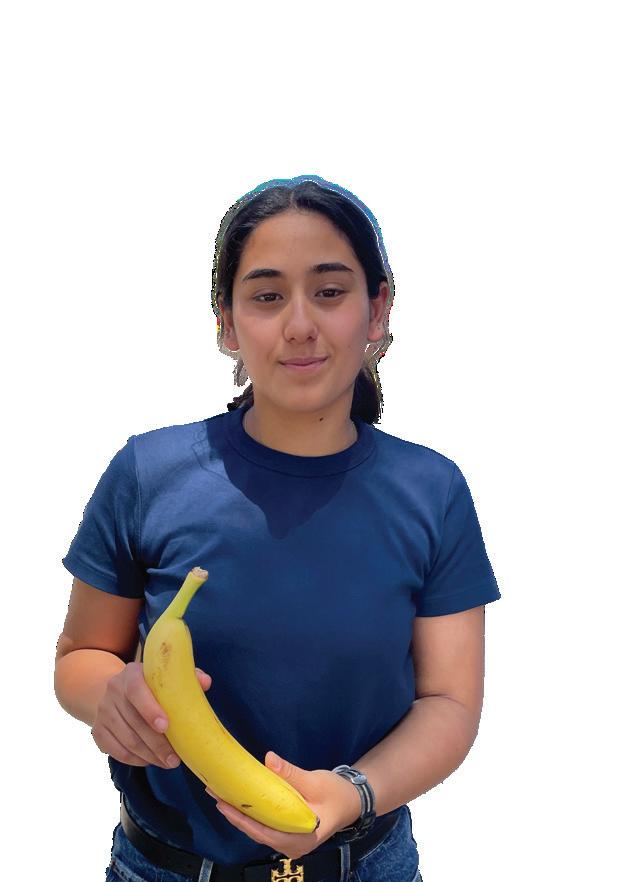
“I usually eat something really light like fruit. Bananas are not too heavy, but they’re really filling, so you don’t feel like you have to eat a lot.”
When athletes battle on the last drops of energy, pre-game snacks can be the deciding factor in securing them the victory. Food fuels players as they strive for success.
“I like eating pasta the night before games because those carbs are great for delivering energy the next day, and my stomach has time to break down the carbs.”

Athletes often find themselves navigating the fine line between foods that provide sustained energy, and those which lead to quick spikes. Visit harkeraquila.com for full story.

“When I started to eat before I ran, I didn’t feel as worn out early into my races. I had faster starts and felt more refreshed on the start line.”
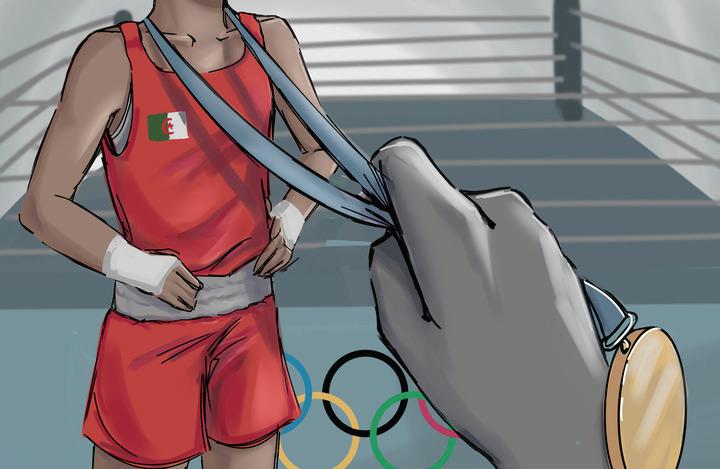
world championship. Taiwanese boxer
The sharp clang of the boxing bell reverberates through the stadium, signaling the start of the match. Two figures, one clad in red, the other in blue, circle each other with calculated precision. In an instant, the woman in red, Algerian boxer Imane Khelif, strikes — once, twice, thrice. In under a minute, she secures her spot in the 2024 Olympic boxing finals. Yet instead of celebrating her triumph, Khelif finds herself amid controversy over her gender identity.
The dispute first arose after Italian boxer Angela Carini withdrew from her match against Khelif 46 seconds in. Carini then fell to her knees crying and refused to shake Khelif’s hand. She later told reporters that she “had never felt a punch like this.” Olympics viewer Tanvi Sivakumar (11) comments on the spread of misinformation following the Italian boxer’s statements.
“The fact that Angela Carini’s statement after her loss made so many people doubt Imane showed to me how quickly wrong information can be spread,” Tanvi said. “I think the match being on the big Olympic stage also added to the controversy.”
The false notion of Khelif being a transgender athlete initially developed after the International Boxing Association (IBA) disqualified her from last year’s
Whether it’s the multifaceted nature of the modern pentathlon or the rhythmic battle of breakdancing, the 2024 Paris Olympics showcased numerous niche sports that the mainstream media often overlooks. Although widely-known sports like basketball or gymnastics attract many viewers, these lesser-known events often bring a new dimension to the Games by showcasing a broader range of athletic talent. As someone who followed 25 out of the 32 Olympic sports this year, I present my ranking of the top five niche Olympic sports based on their entertainment levels.
Lin Yu-Ting was disqualified alongside Khelif, with the IBA claiming that the two athletes did not pass undisclosed gender eligibility tests. These past events fueled baseless rumors that both were transgender women.
““Khelif had to go through this physical turmoil of being a boxer and the mental turmoil of people constantly questioning your identity.”

SAM PARUPUDI (12) STUDENT-ATHLETE
Gender eligibility tests have historically been problematic, with older methods sometimes requiring female athletes to strip in front of a panel of doctors to prove their sex. These tests also disproportionately scrutinize female athletes of color, leading to baseless eliminations and harmful claims surrounding their gender identity. Due to the IBA’s continued use of such controversial gender eligibility tests, the International Olympic Committee (IOC) later banned the IBA from overseeing the Olympics, citing the association’s lack of
Making its debut in Paris this year, breaking, also known as breakdancing, brought a fresh, urban vibe to the Games. As someone who enjoys dancing and watching dance battles, I was amazed to see a representation of dance at the Olympics despite the ongoing debate of dance’s status as a sport or an art.
The most unique of all Olympic events, the modern pentathlon is a dynamic and multifaceted sport that combines five distinct disciplines: fencing, swimming, equestrian jumping, pistol shooting, and cross-country running. With five sports packed into one, there’s always something interesting to keep the audience engaged.
transparency and biased governance.
However, the elimination of transgender women from athletics is no anomaly. Gender controversies in the Olympics date back to 2021, when Laurel Hubbard made history by becoming the first transgender athlete to compete in the Olympics. While her participation marked a significant milestone for transgender athletes, it also sparked a continuous series of debates surrounding the IOC’s policies permitting transgender women to compete in women’s athletics. Having seen both sides of the argument, student-athlete and Olympics viewer Sam Parupudi (12) offers their perspective on the controversial topic.
“Generally, I think it’s a case-by-case basis,” Sam said. “Specifically, it seems to be a bigger issue in women’s sports because men tend to have a physical advantage. But as you transition, you tend to lose testosterone, so it’s not entirely fair to write someone off because they were born as a man. Sometimes, it depends on how far they are in their transition.”
Amidst the many perspectives on transgender participation, one major question remains central: how can “fairness” in athletics be defined?
While athletics have been historically split into categories based on age and sex to maintain equal competition and minimize unfair physical advantages, special cases continue to arise.
Visit harkeraquila.com for full story.
Watching athletes move in perfect harmony, creating intricate patterns and formations has the ability to mesmerize anyone. I could not help but wonder how the swimmers held their breath as they executed such complex yet graceful movements in perfect unison.
gabe sachse & eva cheng
The crowd holds their breath in anticipation as a man toes the line that denotes shooting distance from the target. Dressed in a simple T-shirt branded with Turkey’s team logo, he adjusts his glasses before raising his pistol, ready for the start of the timer. The competition begins. Bang. Bang. Bang. Bullseye after bullseye after bullseye. While his competitors were decked out in custom eyeglasses and top of the line ear muffs, 51 year old Turkish sharpshooter Yusuf Dikec stepped up bare-faced, becoming a social media sensation after pulling off an astonishing Olympic run to win the 10 meter mixed Air Pistol silver medal at the 2024 Paris Games. His achievement, despite lacking the fancy gear associated with elite athletes, has reignited the debate over whether higher quality equipment necessarily correlates to improved performance.
“Some have raw talent, and they could go far with it. But on top of that, if you add good equipment, you could make your talent even better.”

In a statement to Turkish news station Haberturk, after the Games, Dikec justified his lack of gear, explaining, “I think my shooting pose represented the Olympic spirit very well: the fair play, simplicity, clarity and naturalness. That’s why it got so much attention. I never needed that equipment. I am a natural. A natural shooter.”

3. BMX
Right in the middle of my list is bicycle motocross. Whether it’s racing or freestyle, BMX is packed with adrenaline and action. When they race, riders navigate a dirt track at breakneck speeds, take sharp turns and launch their bikes into the air over sand dunes, differentiating the sport from mundane cycling.

While speed walking does not immediately come to mind as a thrilling sport, it has its own unique appeal. Considering the long distances athletes have to walk, 20 and 50 km, the physical endurance and technique required are quite impressive. The strategy involved in pacing and maintaining form can be intriguing to those who appreciate the subtleties of athletic performance.
Rhythmic chimes echoed through the upper school campus at 8 a.m. on Monday morning, ringing out a familiar tune. As the bell played its final notes, chatter in the hallways dissipated, classroom doors closed and students sat down at their desks for their first classes. Thus began the 2024-25 school year.
Although for seniors the first day of school began much earlier at 6 a.m. with the annual “Senior Sunrise,” all students on campus looked forward to starting their first classes and launching back into a year of fruitful learning.

For frosh students, the start of the year bore its own appeal; it marked the
beginning of their high school careers, another notch in the path towards adulthood. For many, the journey bears both excitement and nerves.
Frosh Saria Lum expressed enthusiasm for embracing new avenues on campus, such as joining research or the Women in STEM club.
“I’m a little nervous, but it’s really exciting that we get to have a lot of opportunities,” Saria said.
“It’s a really different dynamic being an eighth grader or being in middle school versus high school, but I’m still really excited to get to know my teachers and students. I’m really happy with the classes that I have this year.”
On the other side of the spectrum, seniors looked to the first day as a bittersweet milestone in their final year of high school. While many obstacles still lie ahead before graduation, from the throes of college applications to robust senior year course loads, students like Tiana Salvi (12) eagerly await the excitement of life beyond just high school.



“It hasn’t kicked in, but by the last day I’m going to be crying my eyes out,” Tiana said.
“It’s cool to see


the high standards set by previous years but to also introduce new initiatives that resonate with the diverse needs of their community. ASB Secretary Jia Jia Jiang (12) expands on their plans to leave a lasting impact on the student body.
“All of us are looking forward to being on ASB,” Jia Jia said. “The experience of helping out our community on a higher level than we’ve previously worked before is really exciting. As we ease into the fall months, ASB is planning to do their annual Chellaween and Thanksgiving Grams. Our student council and SAB members are really great this year, so I am excited to see how our new initiatives,


for the new year, anticipating seeing months of often unnoticed preparation finally come to fruition.
“I’m so excited that all the work we did last spring and last summer to get classes ready, rooms ready, facilities ready, all pays off,” Barsky said. “I’m excited that this is my third year here that I feel more part of the community as I’m also leading the community. I feel very fortunate to be in [this position], particularly as we move towards an election cycle, to be able to emphasize the act of awareness, of listening to other voices and of kindness.”
Visit harkeraquila.com for full story.
1. POINT AND SHOOT Jia Jia Jiang (12) takes a photo during Senior Sunrise. Students enjoyed hot cocoa and donuts during the event. 2. SMILE Aishani Singh (12) checks her digital camera at Senior Sunrise. Senior Class Council provided a picture frame prop for seniors. 3. BLAST FROM THE PAST Upper school history teacher James Tate introduces his students to the new school year. Tate spoke of his interest in the Donner Party. 4. CHEESIN’ Junior Lucas Chen smiles at a classmate during APUSH. The APUSH course opens to students in junior year. 5. HUSTLE AND BUSTLE Students fill Manzanita Hall during the lunch rush. Cafeteria staff served chicken over coconut rice at Chef’s Grill. 6. THE WAVE Seniors pose for the camera at 6 a.m. on the first day. 7. VIP Tiffany Zhu (11) converses with Head of Upper School Paul Barsky during morning drop-off. Barsky greeted students for the first Students play basketball Downbeat classmates member Charlotte Ludlow (11) plays a warm-up game in class. Laura Lang-Ree and Jennifer Sandusky serve as directors of the acapella 10. ONWARDS AND Students walk through campus at the end of the first school day .



